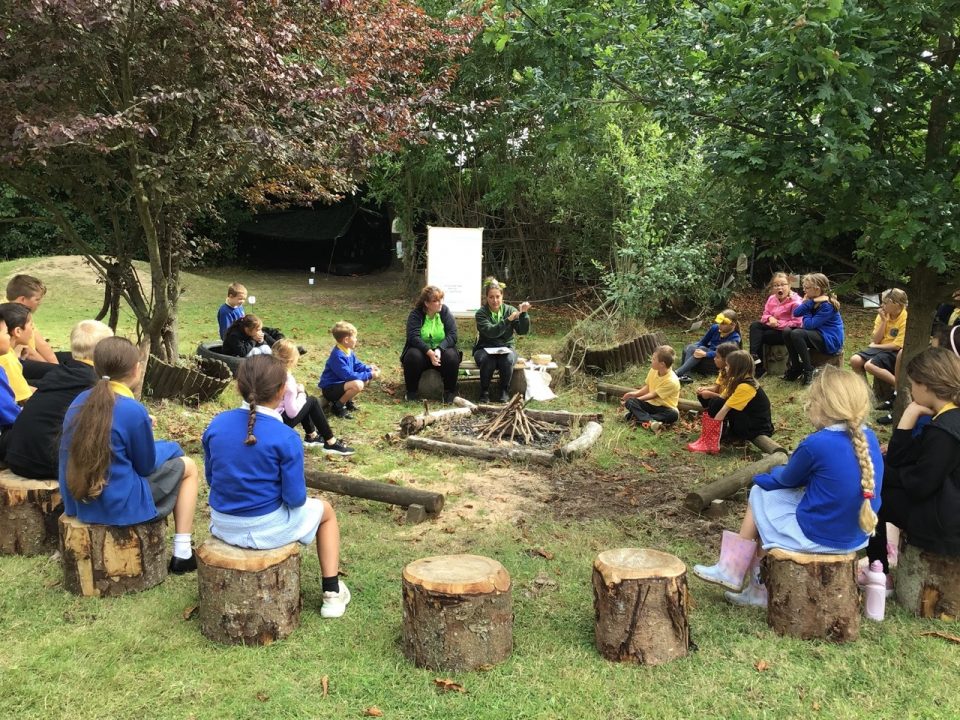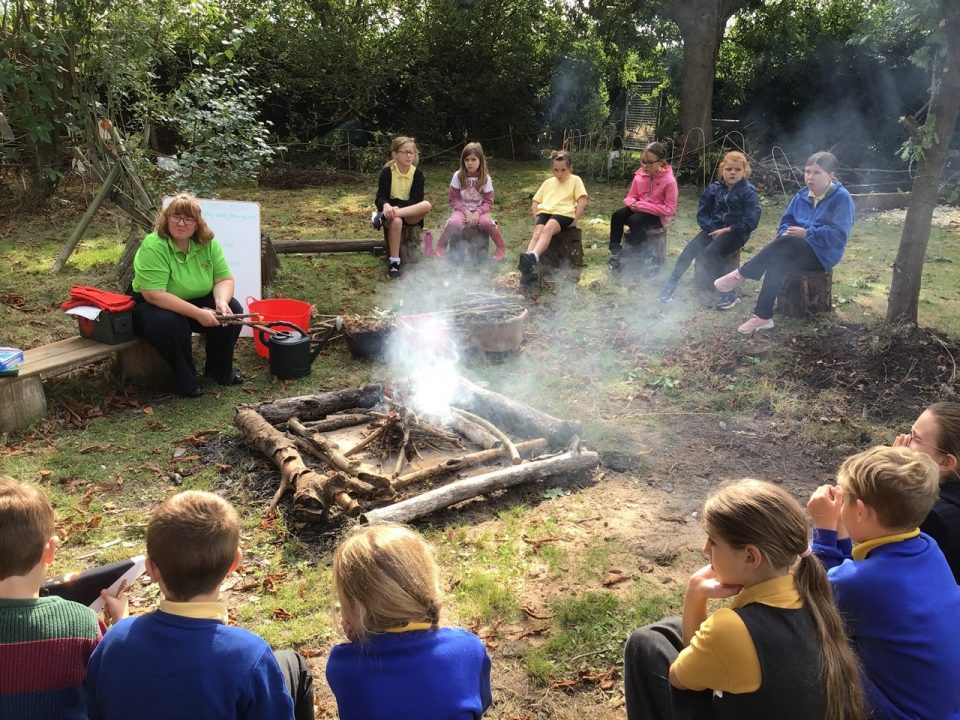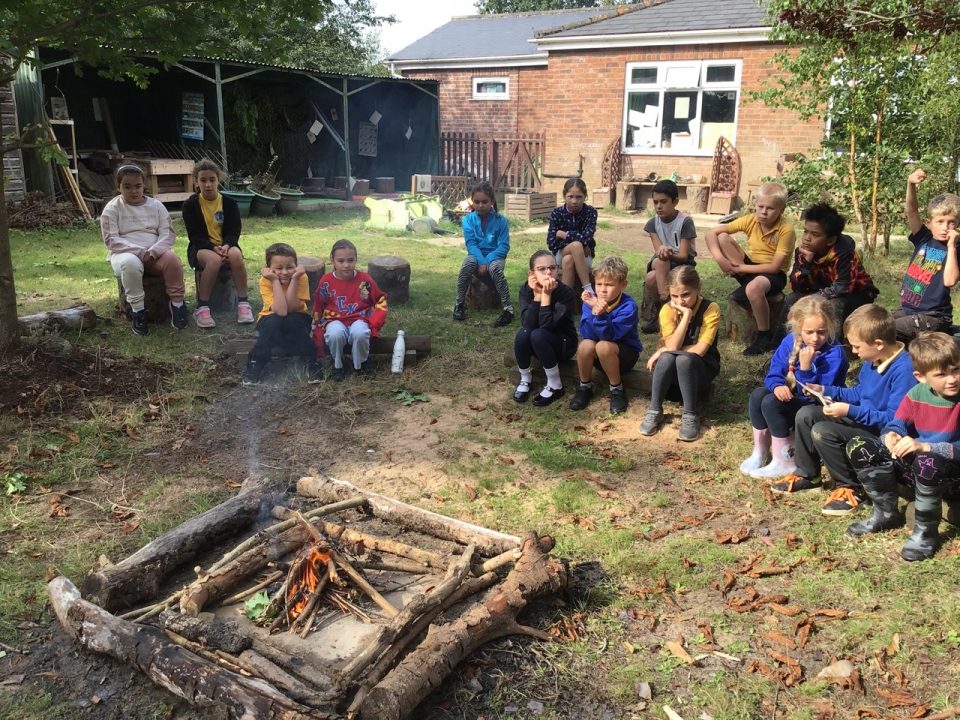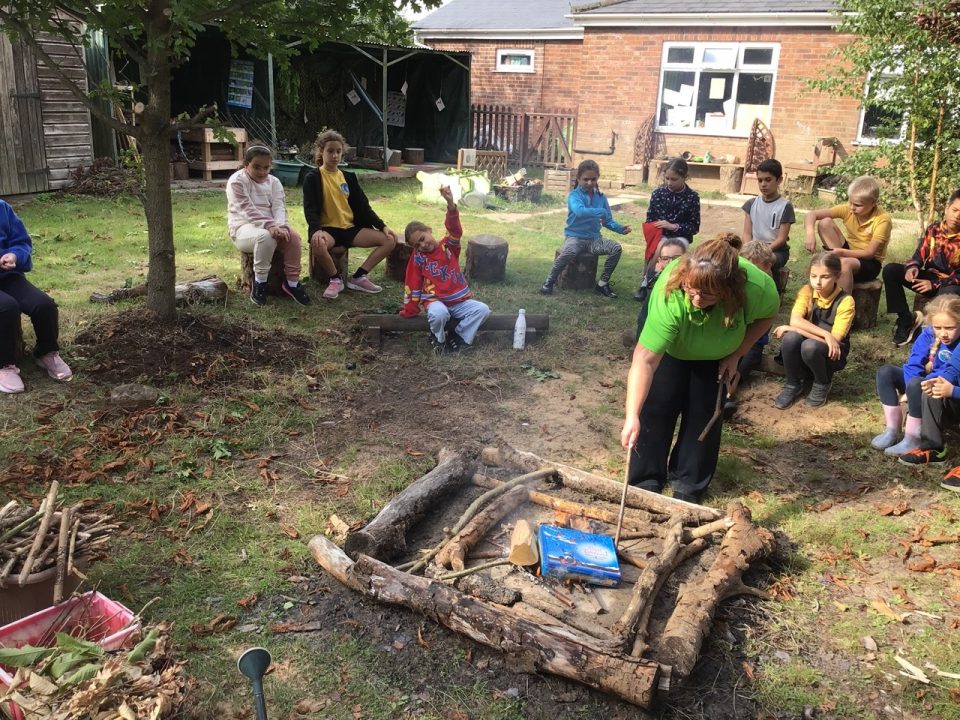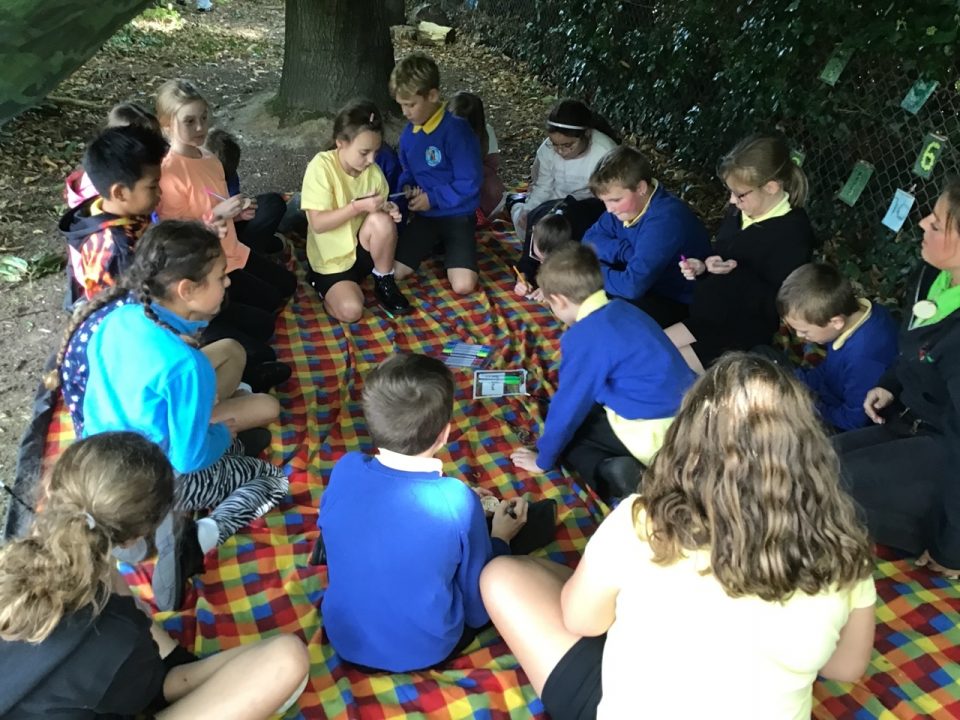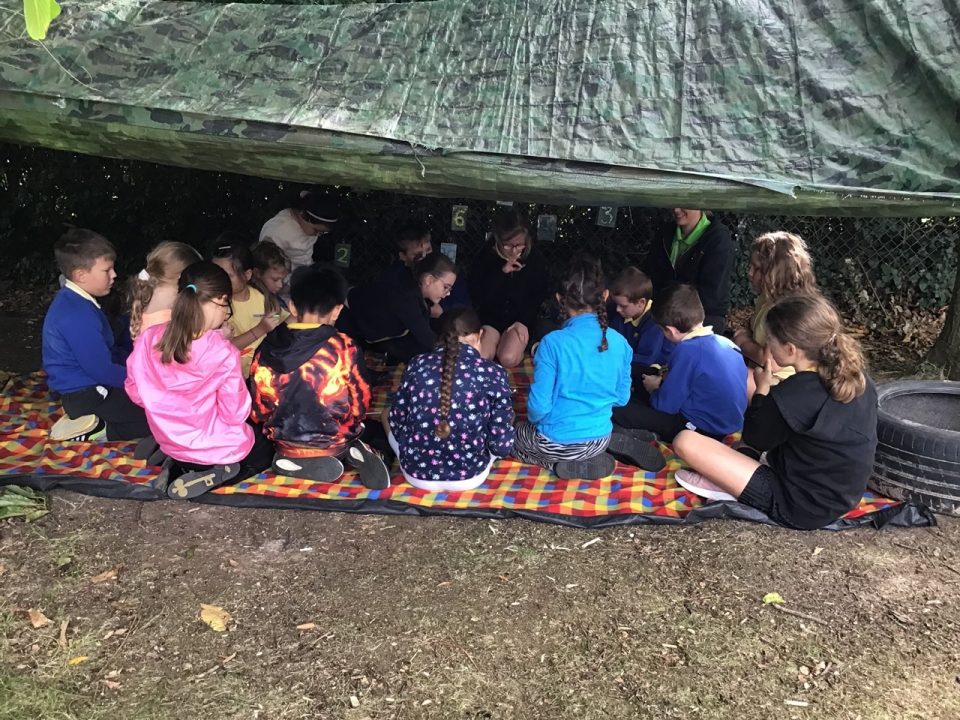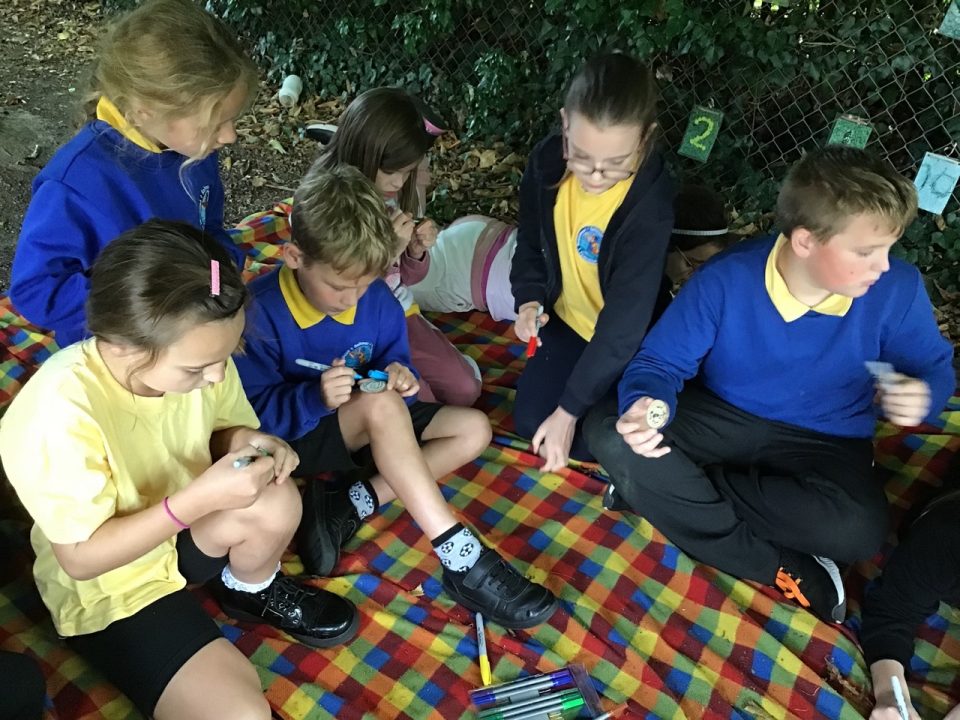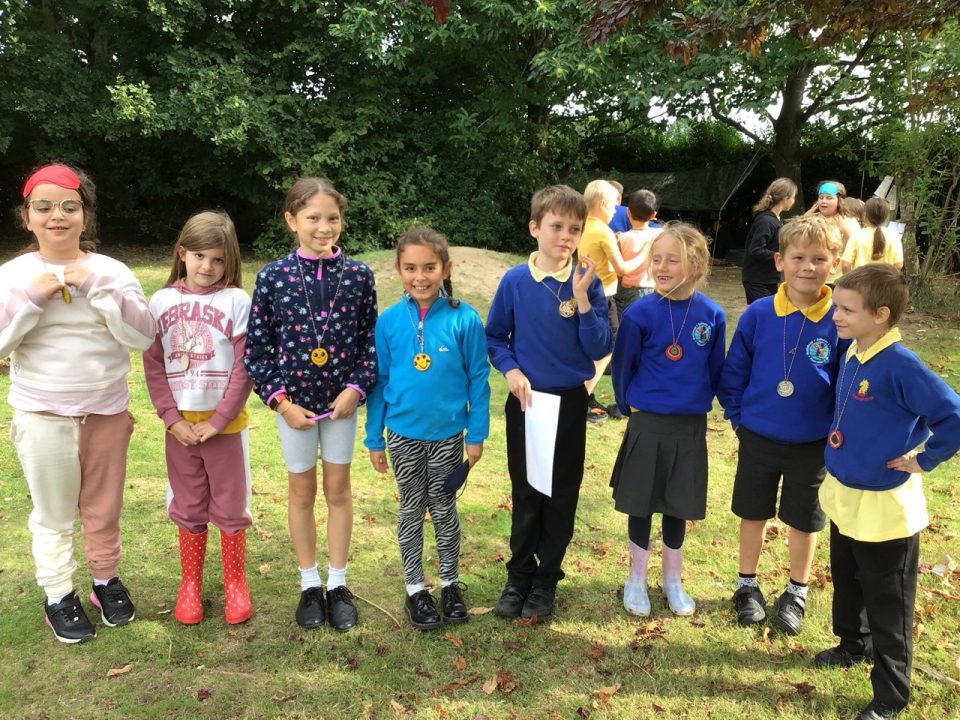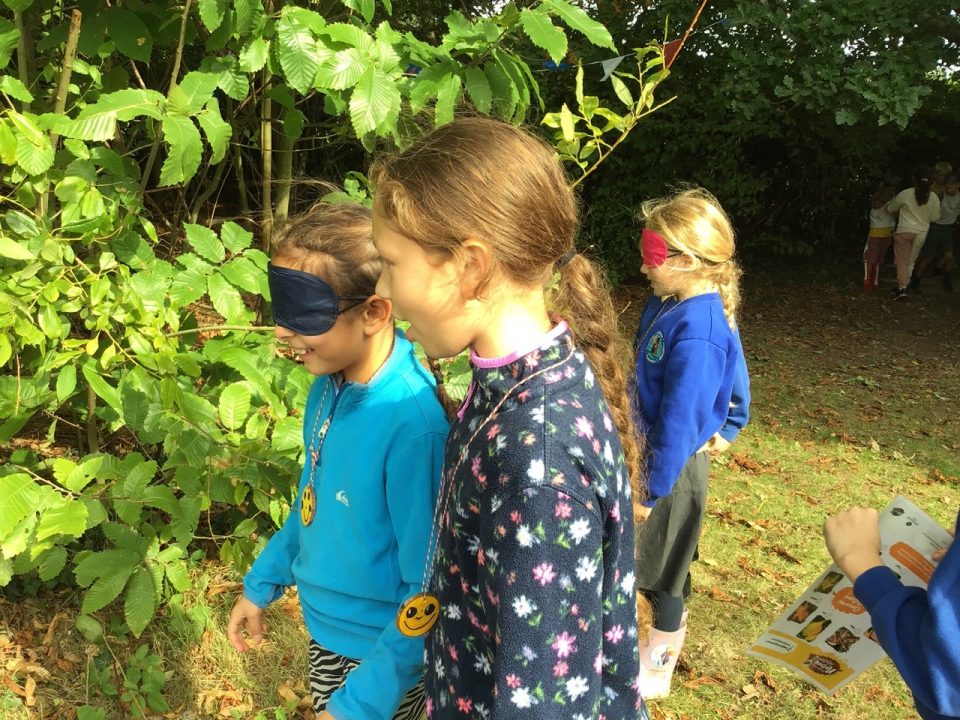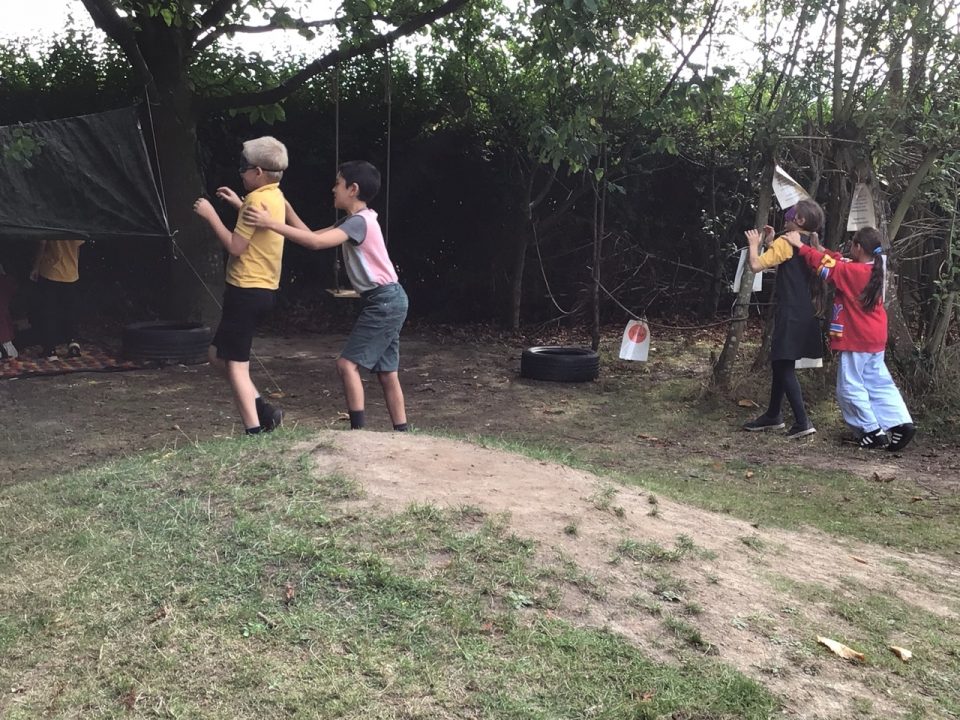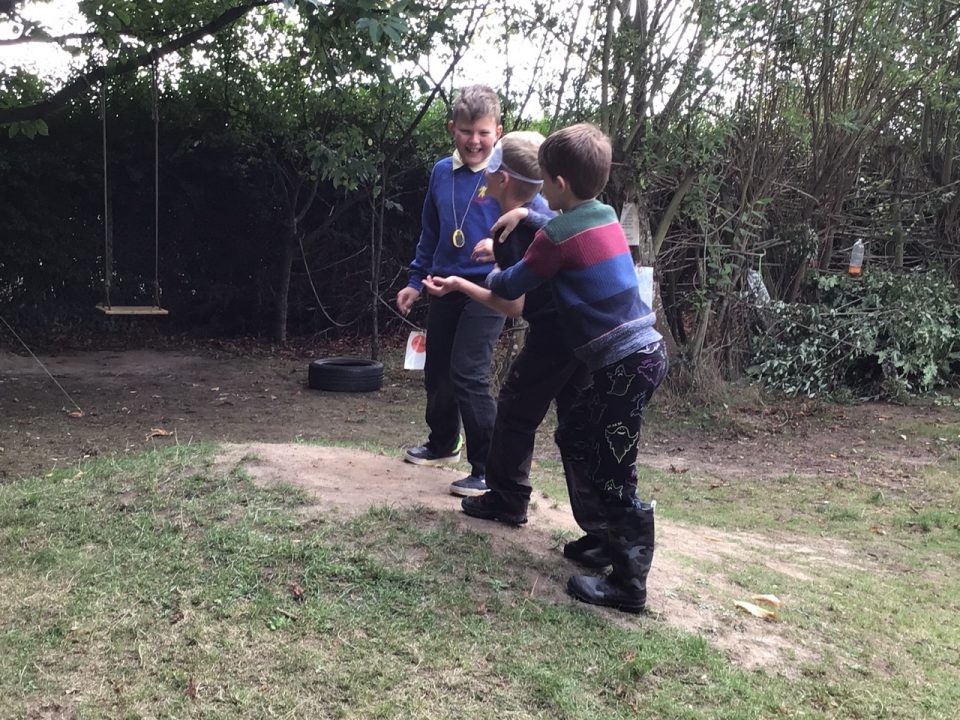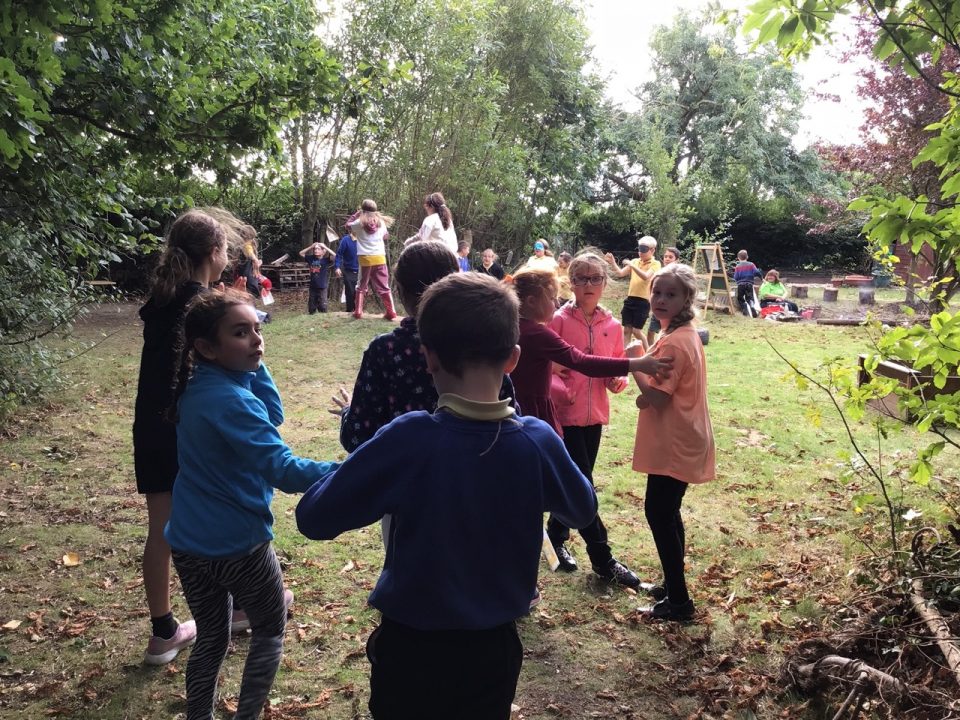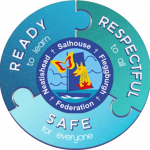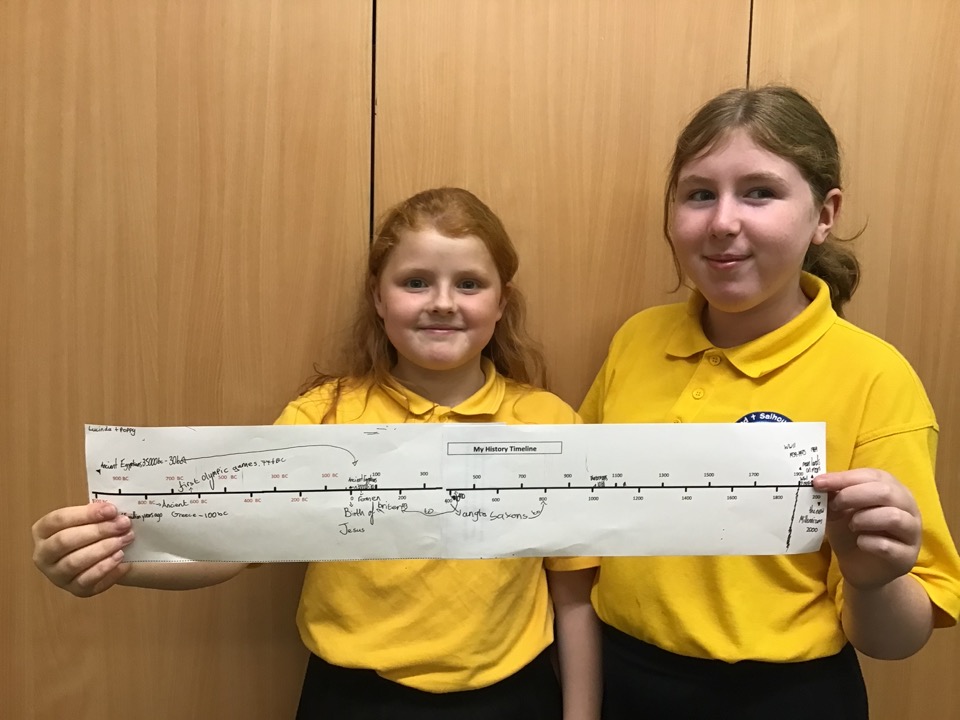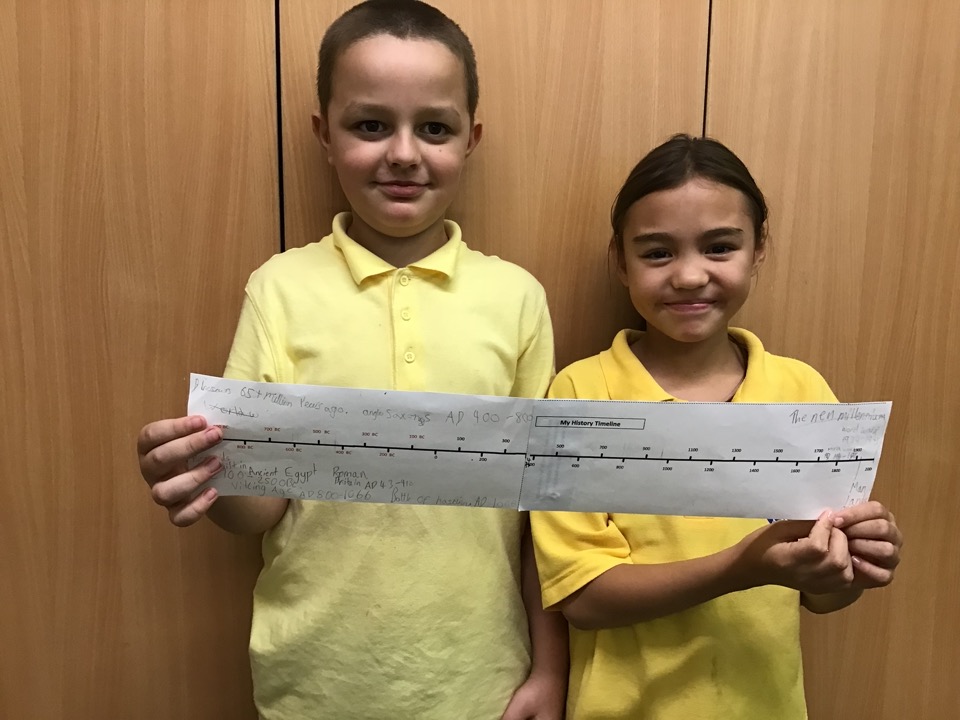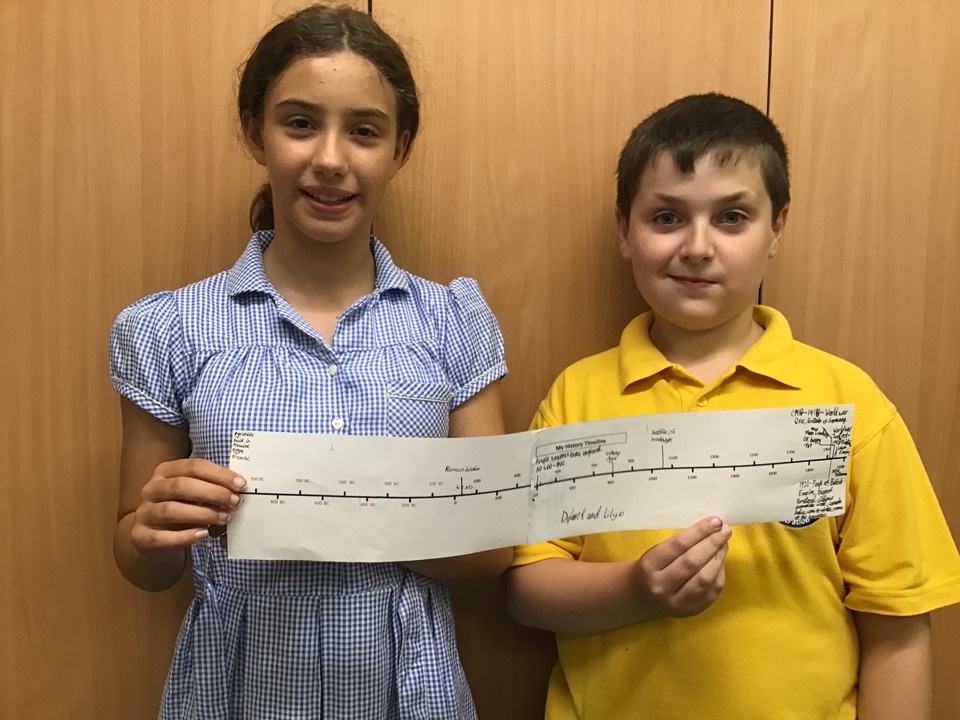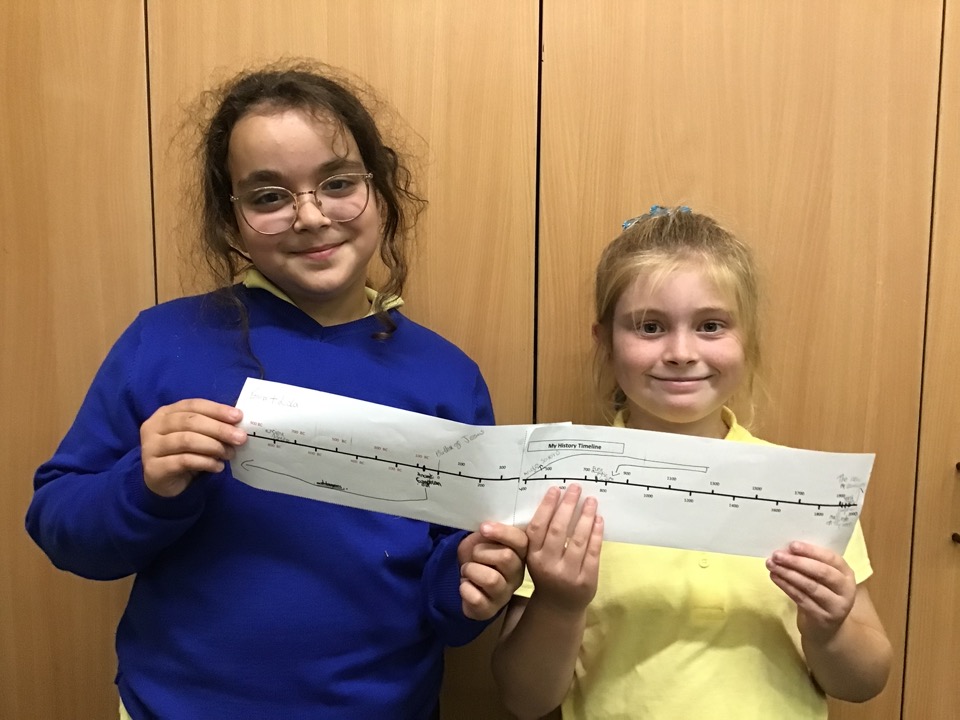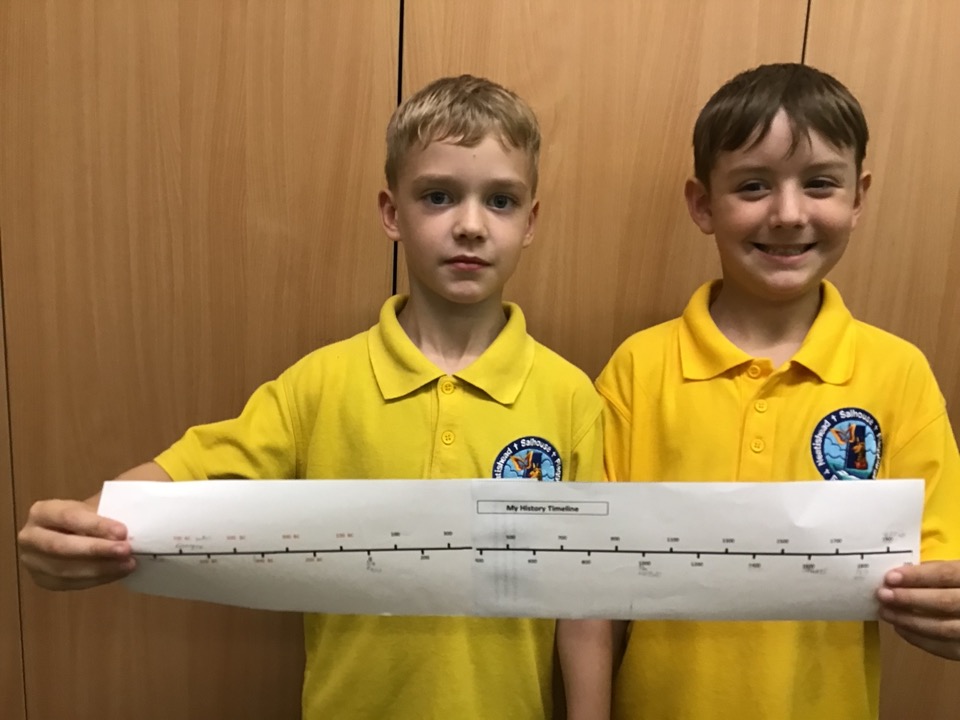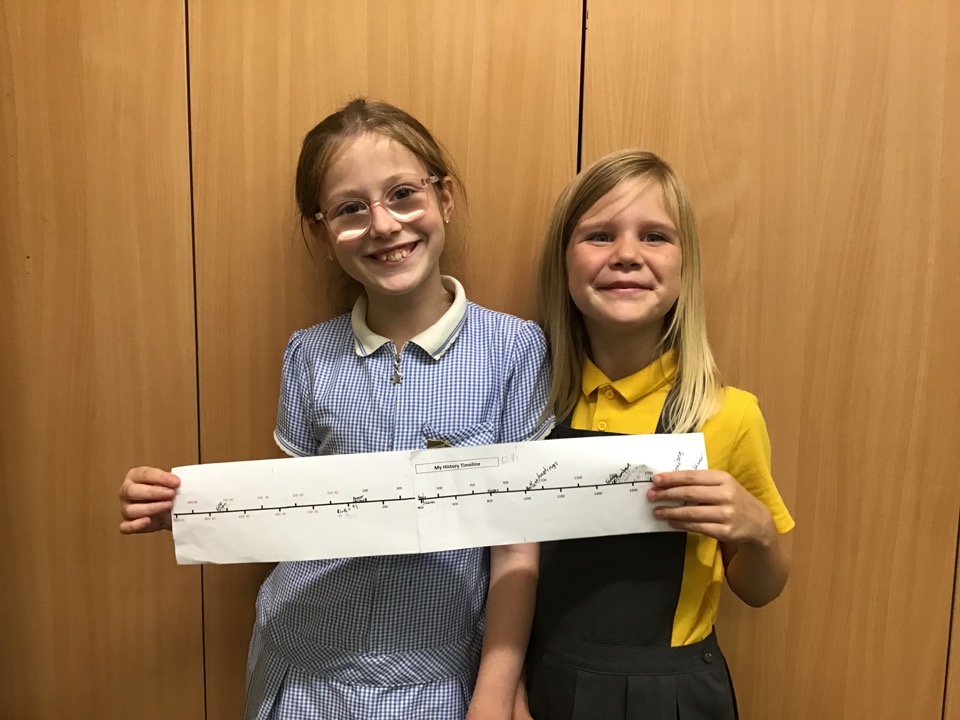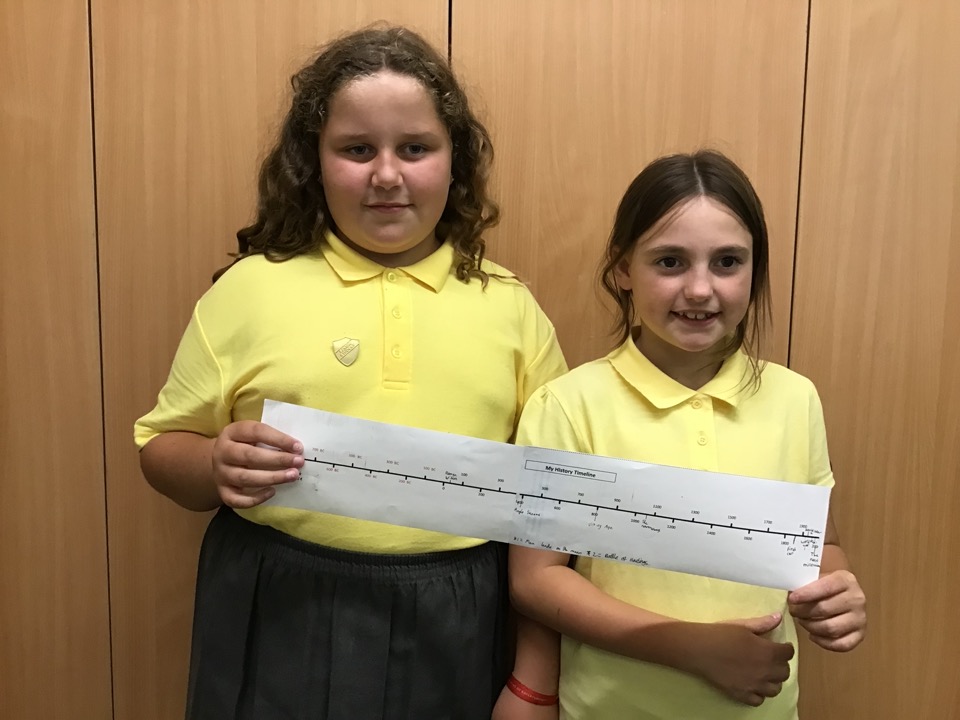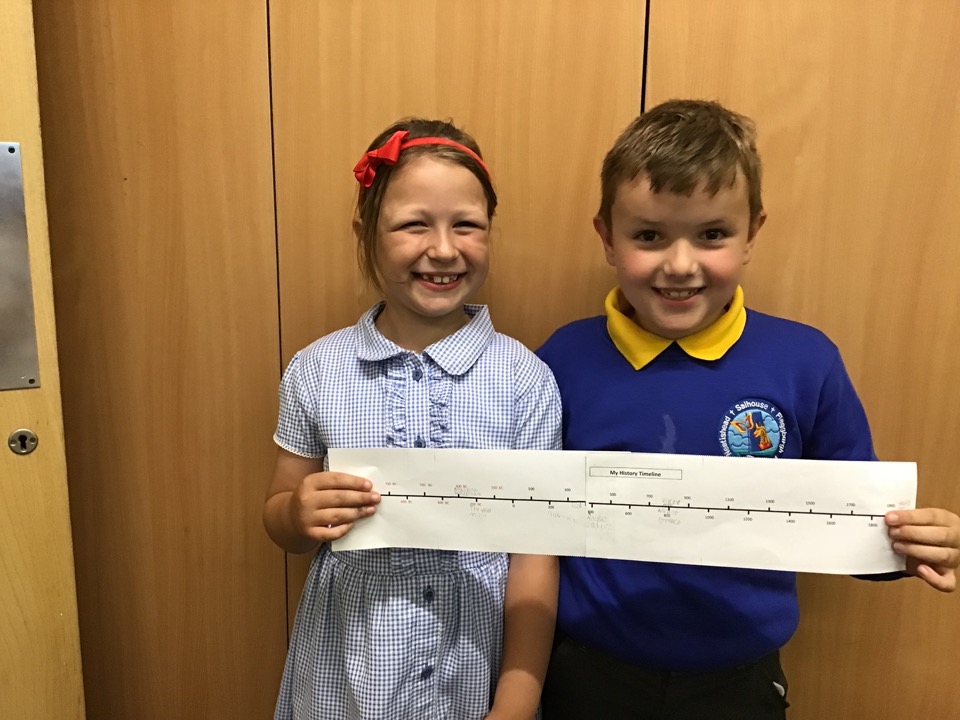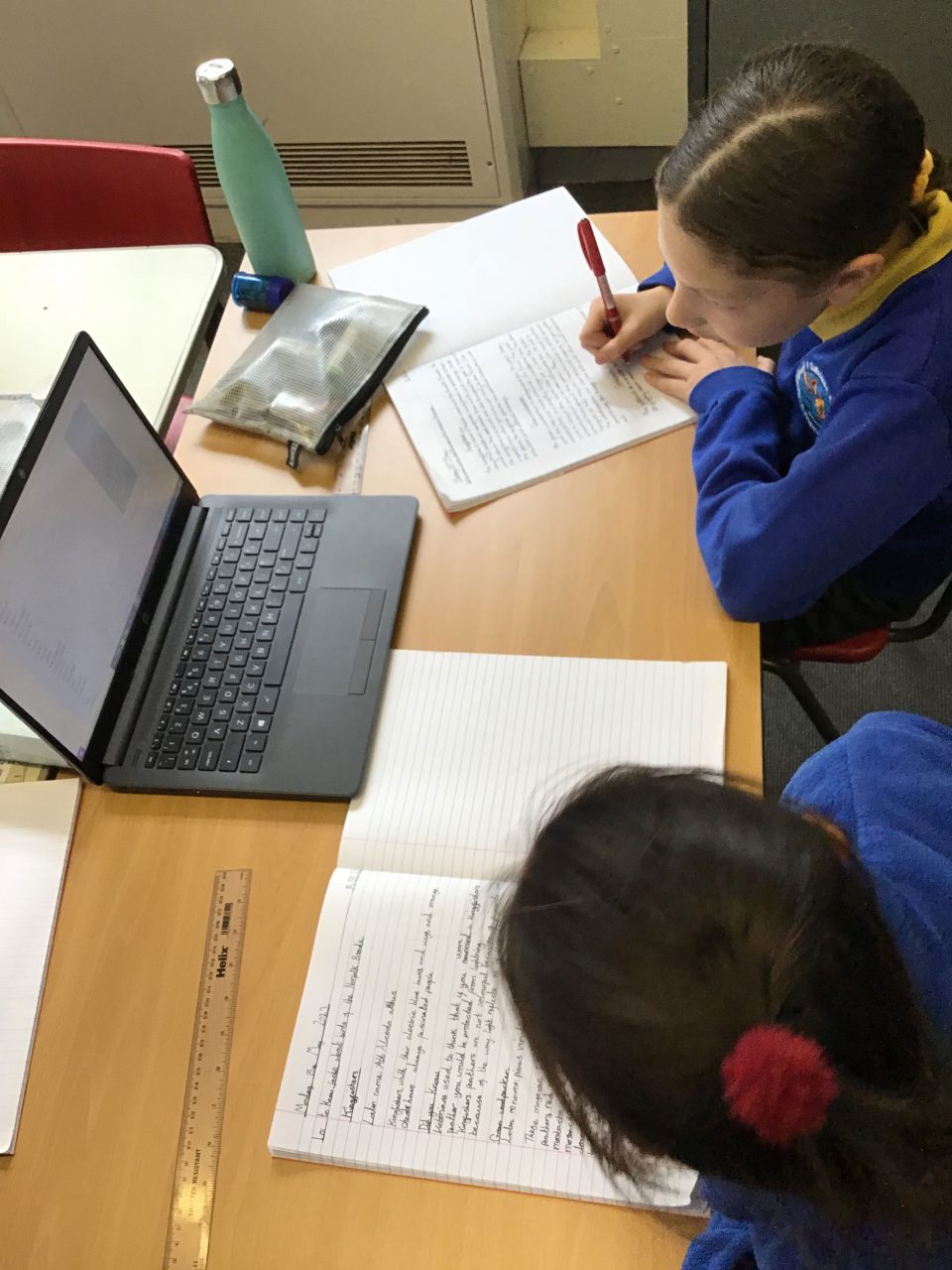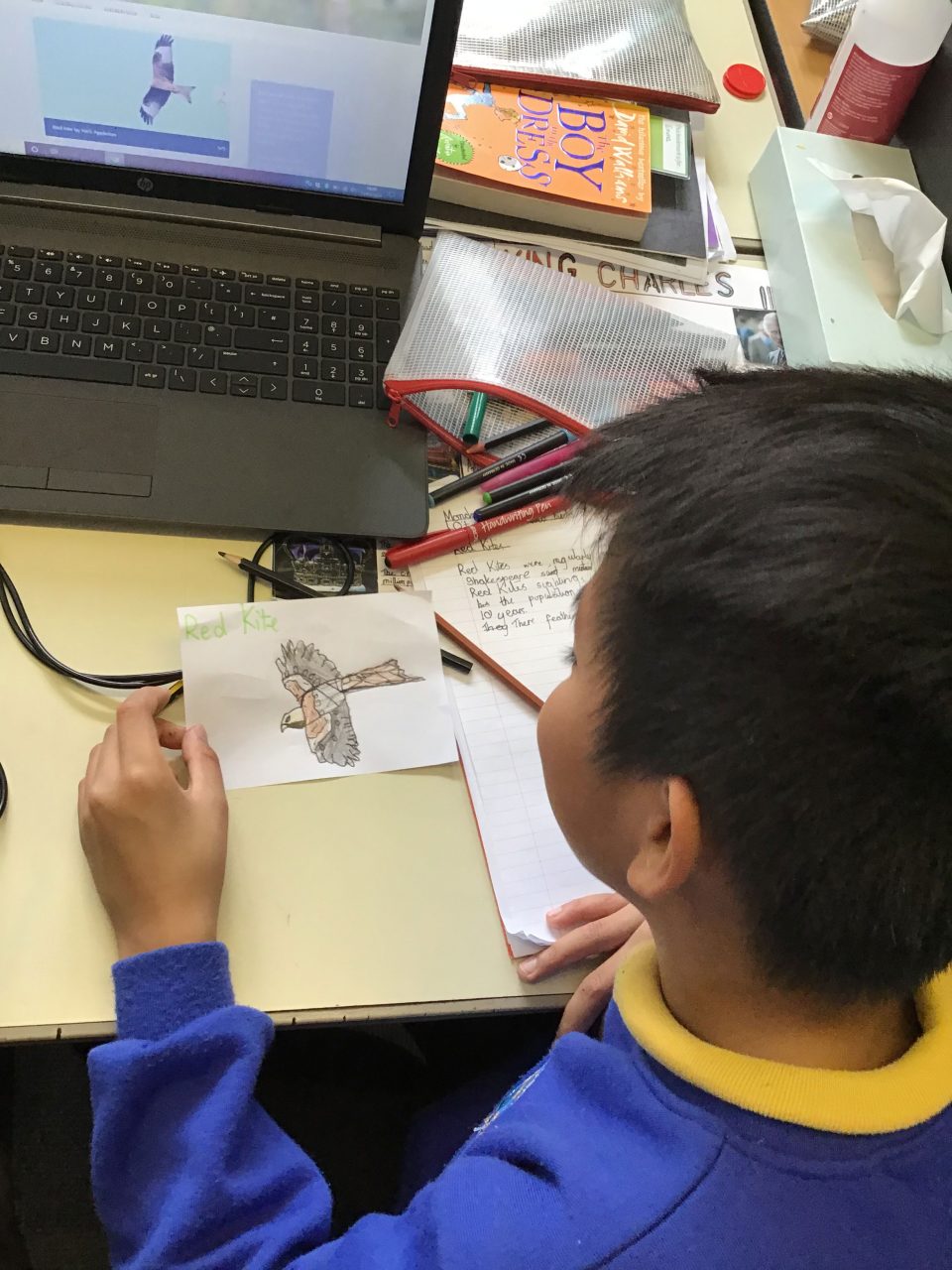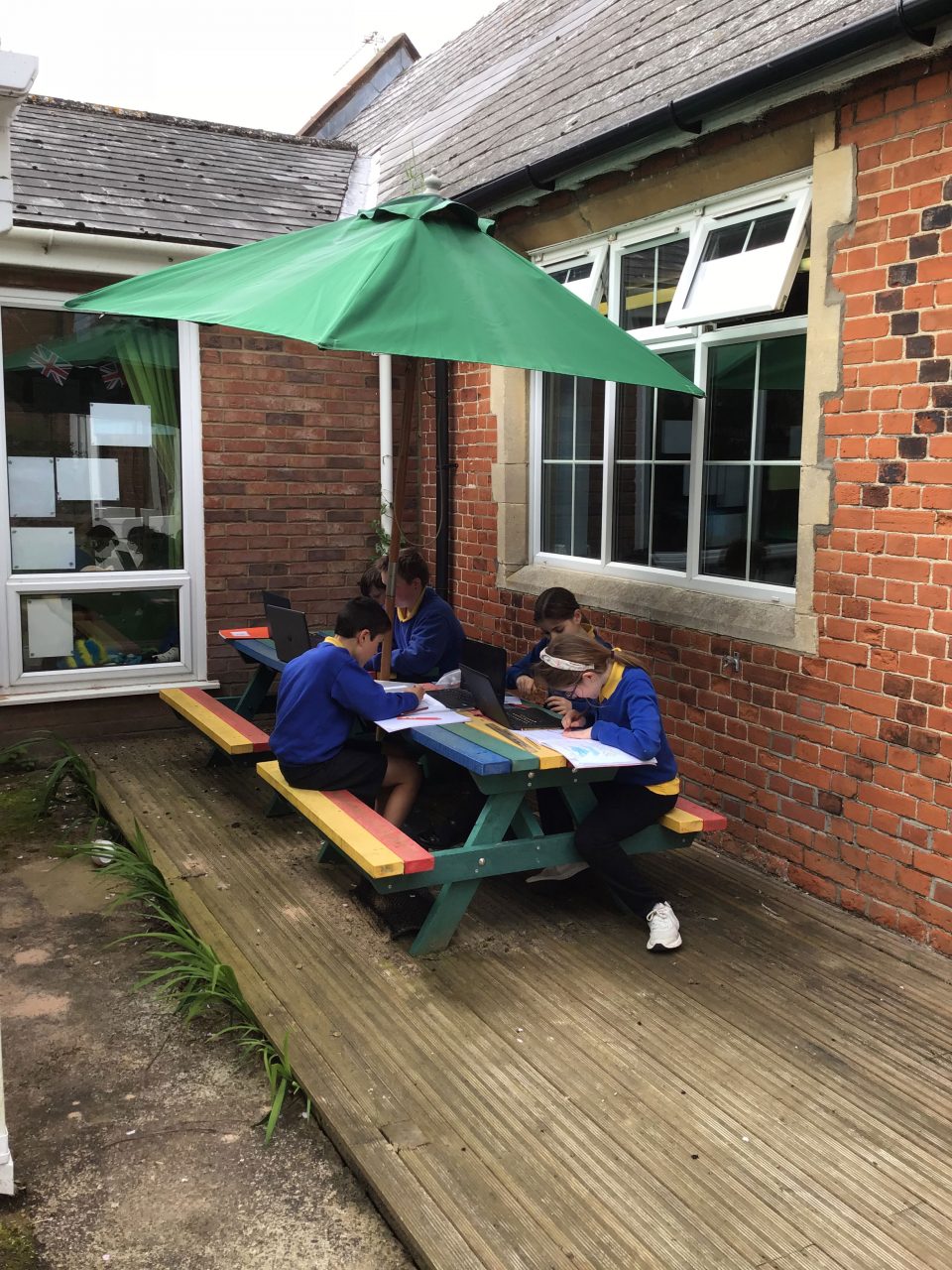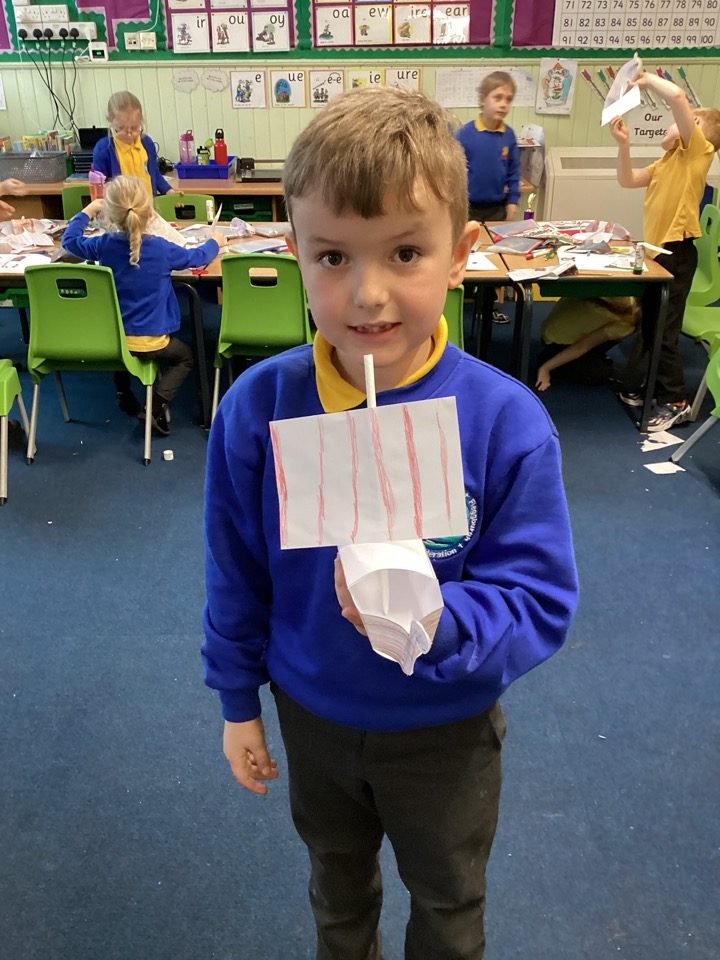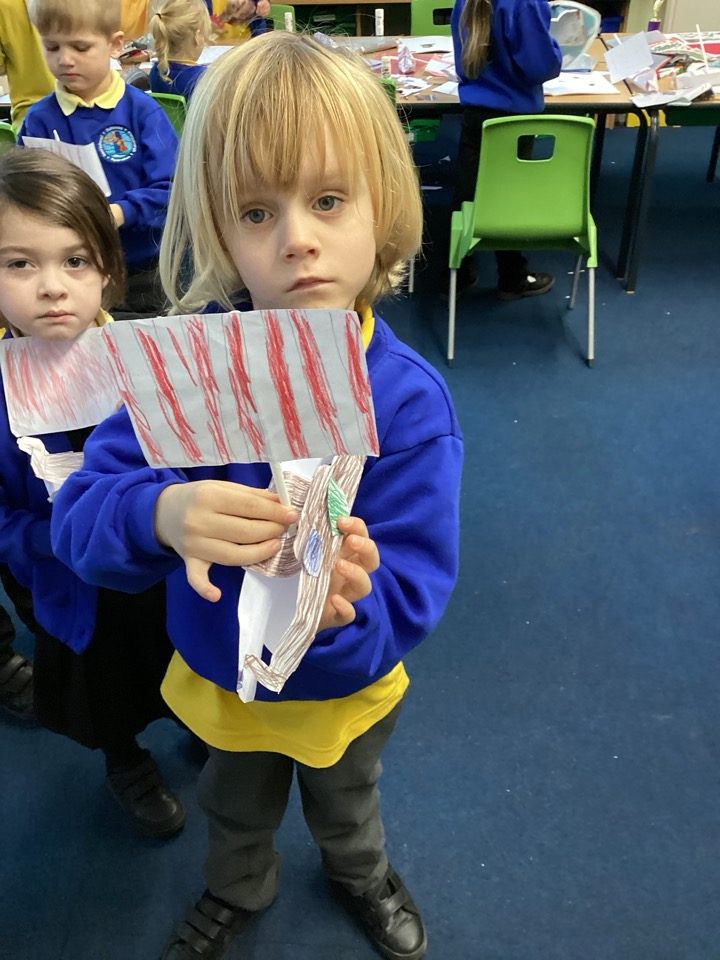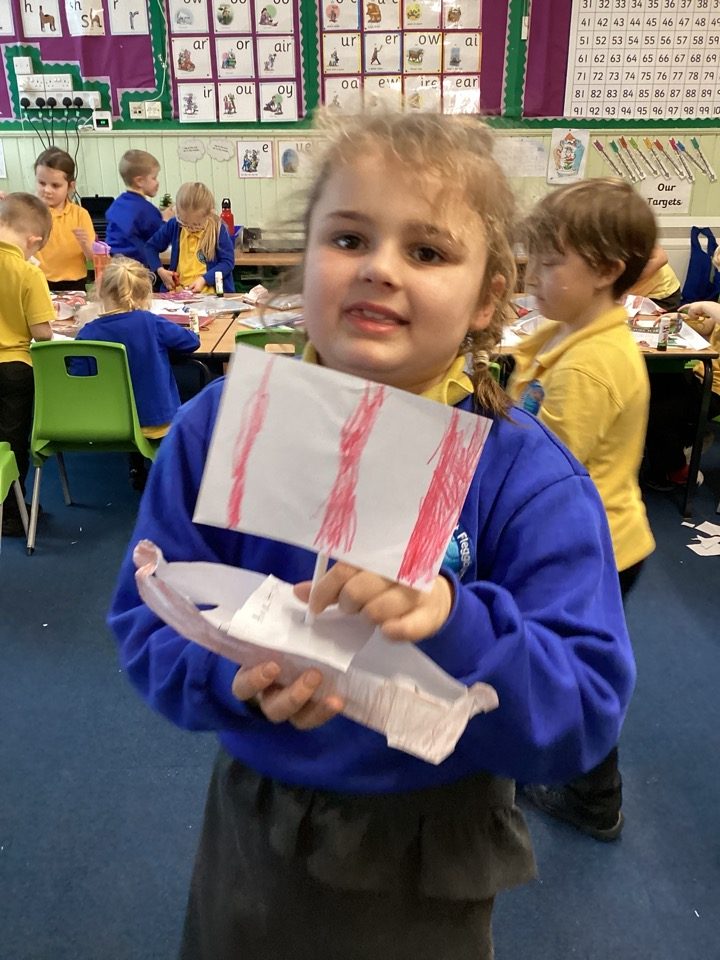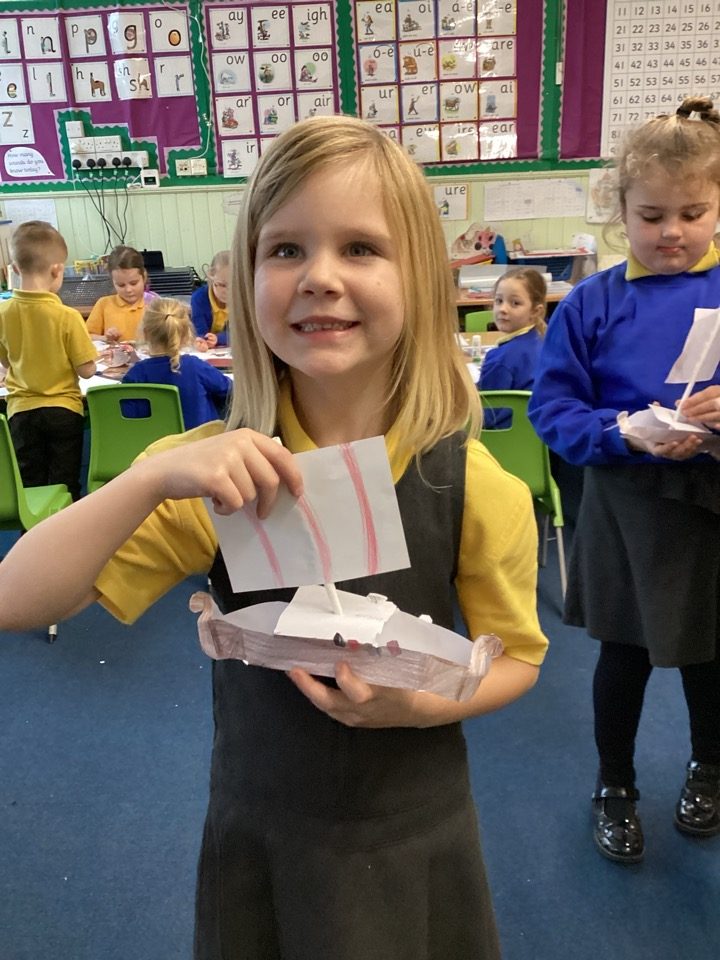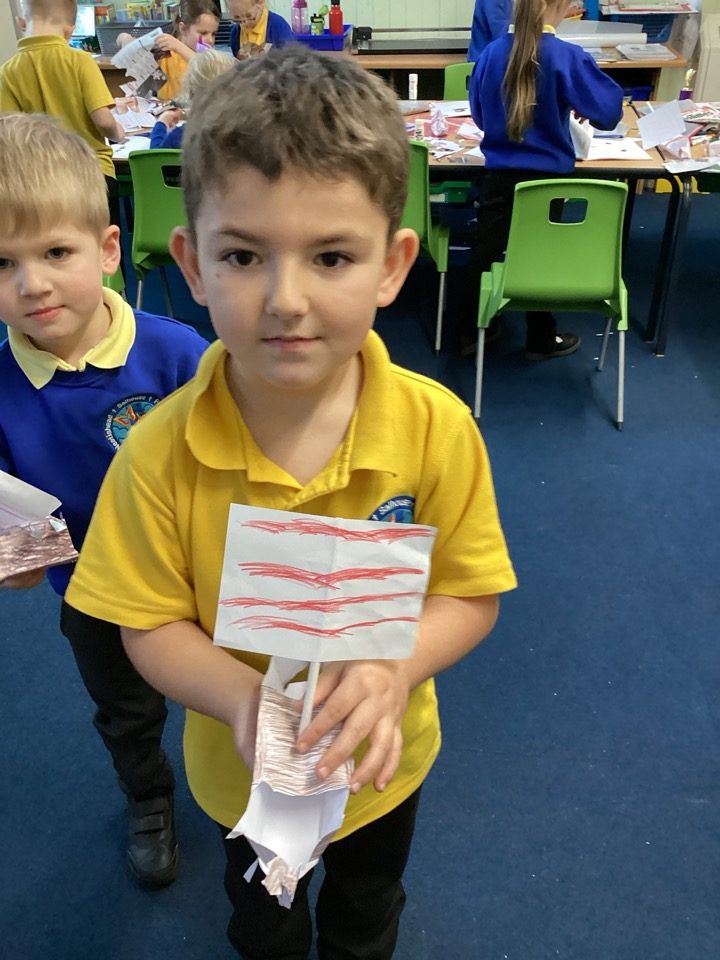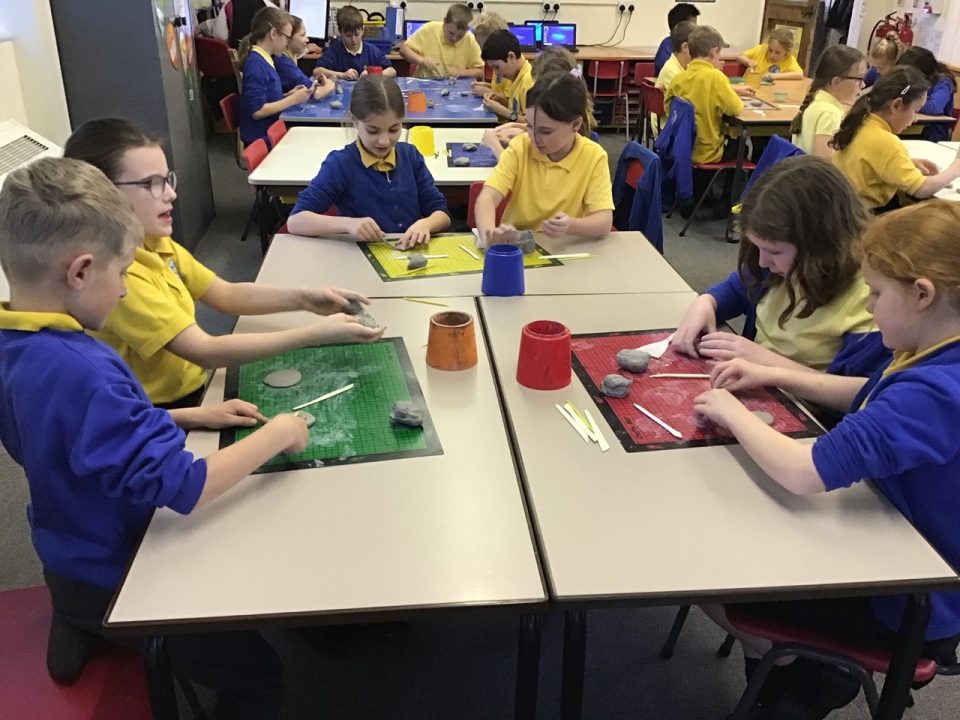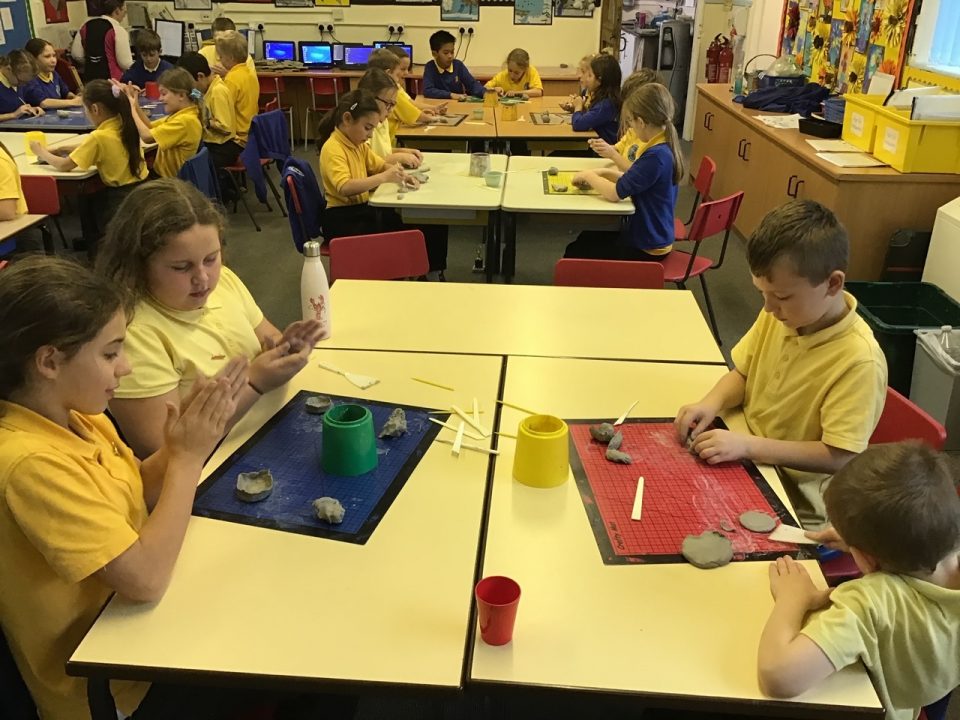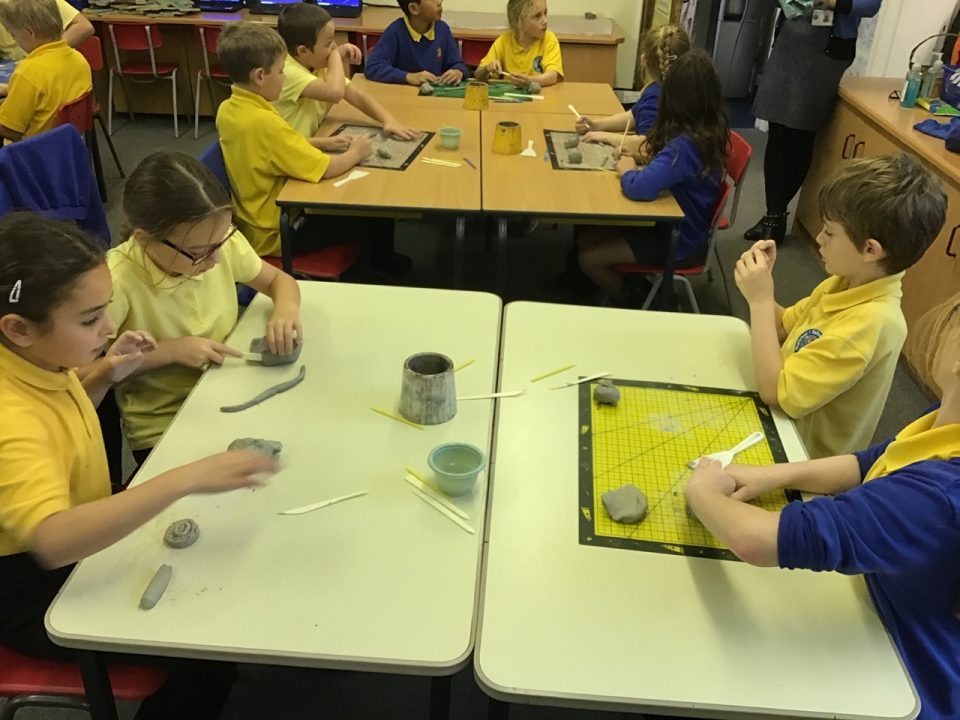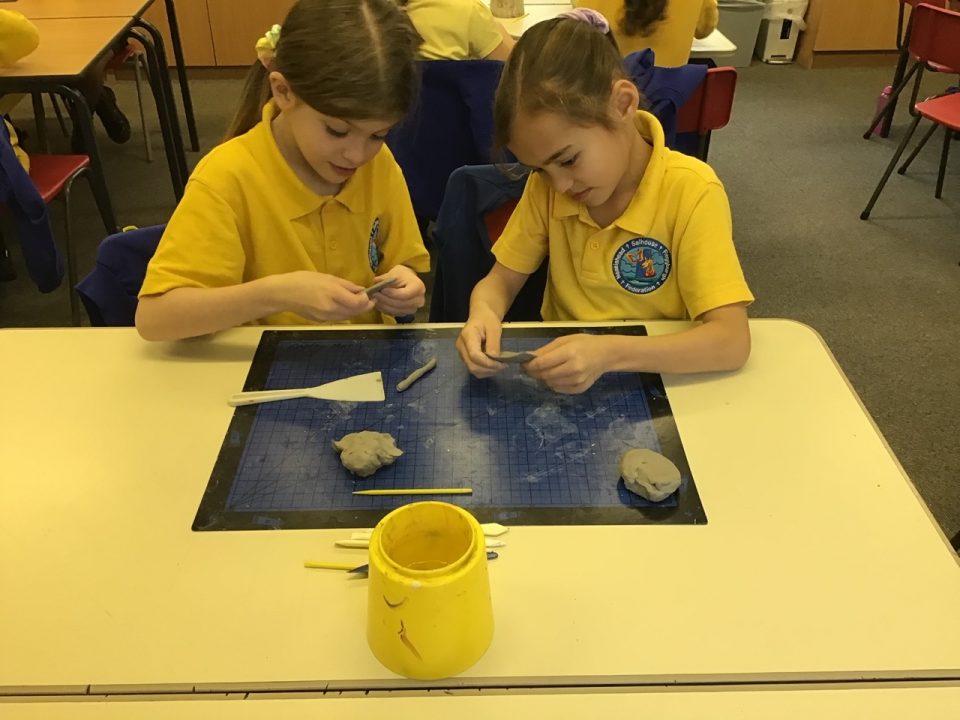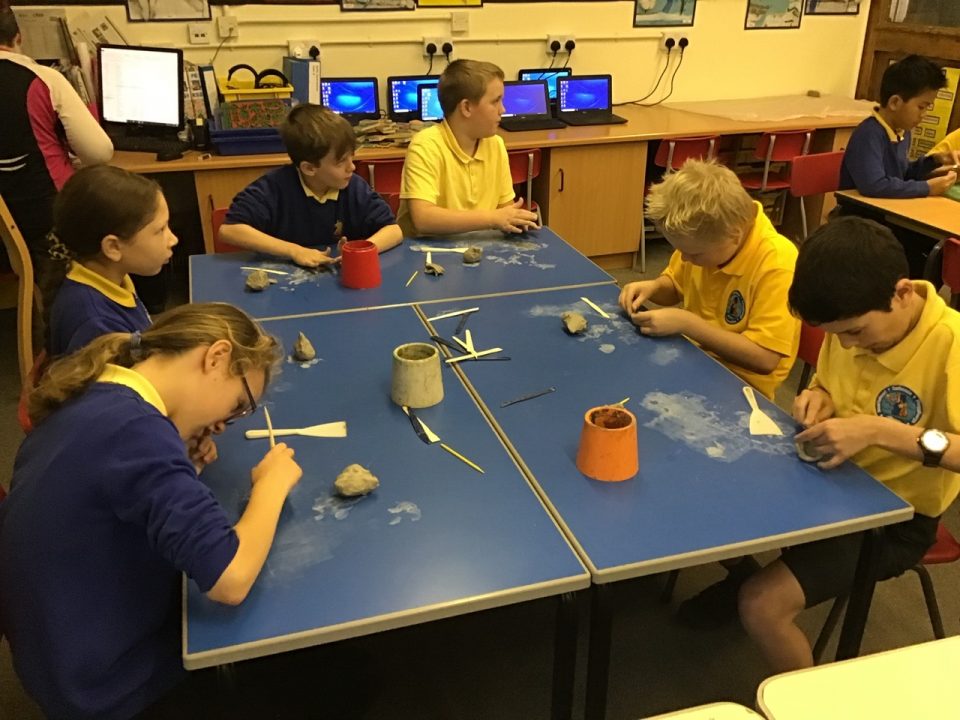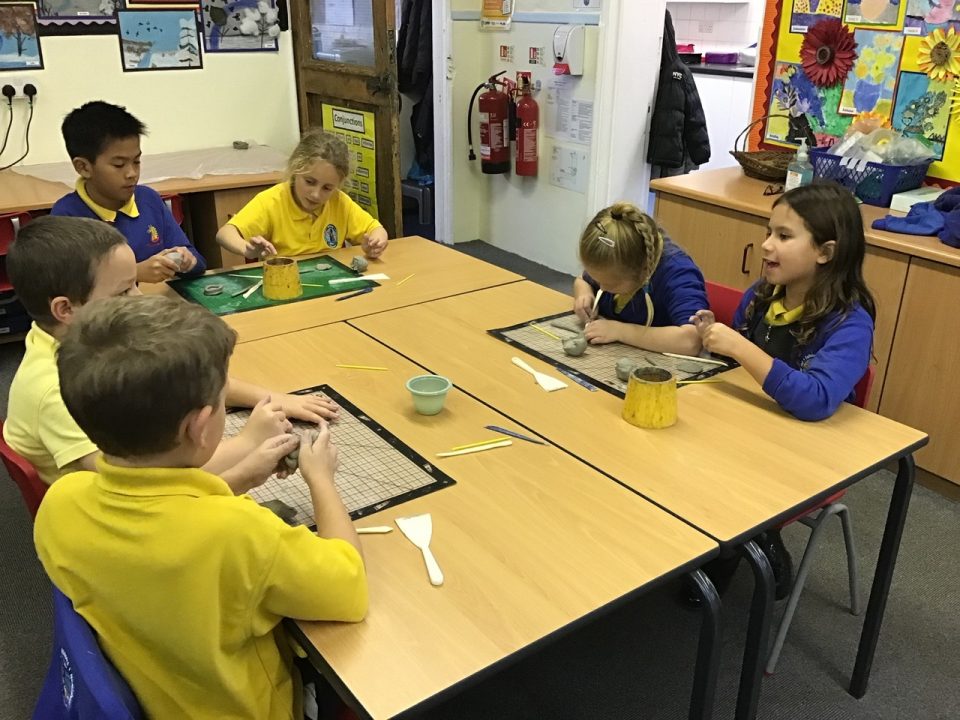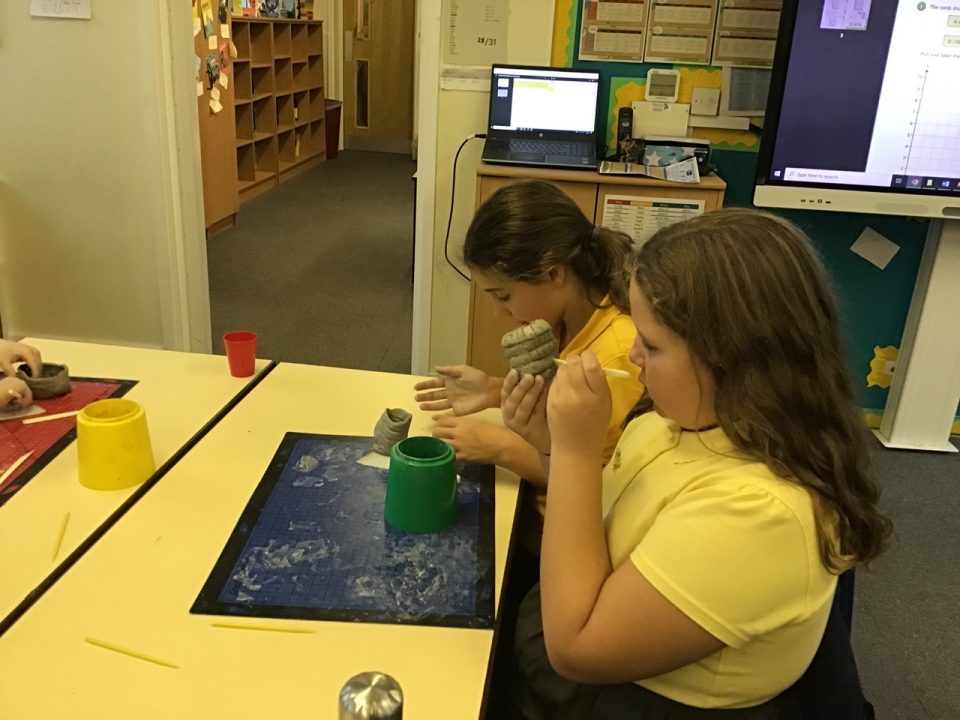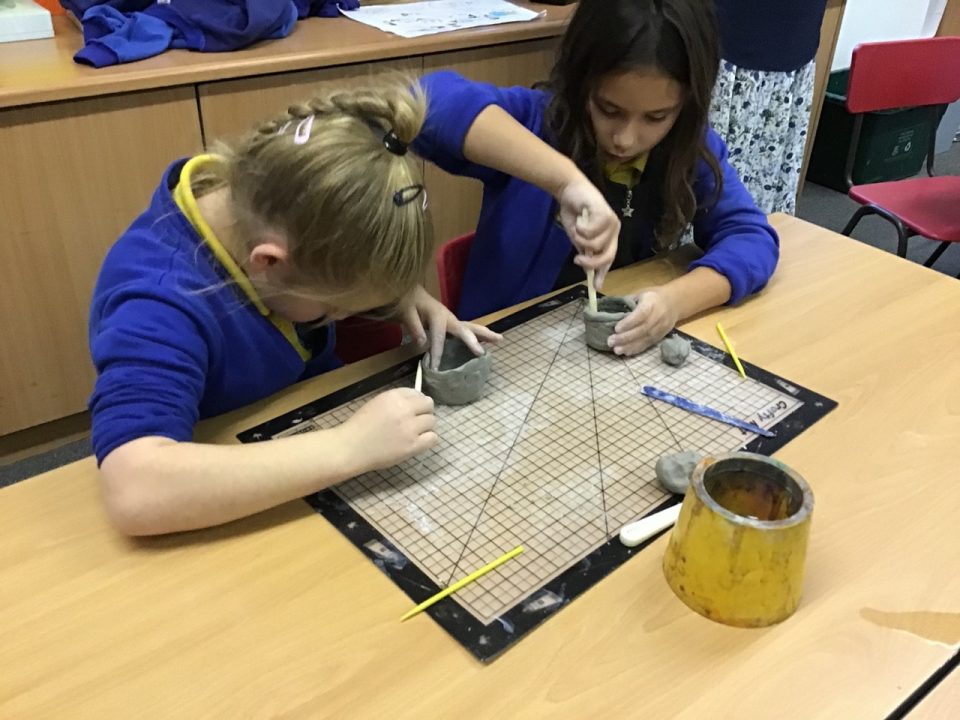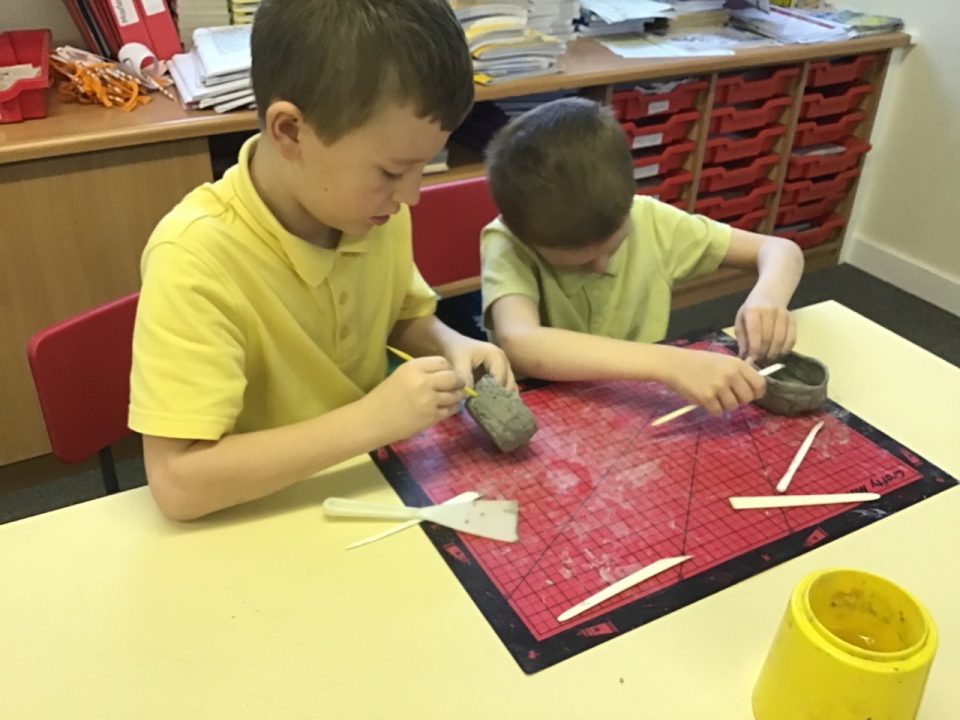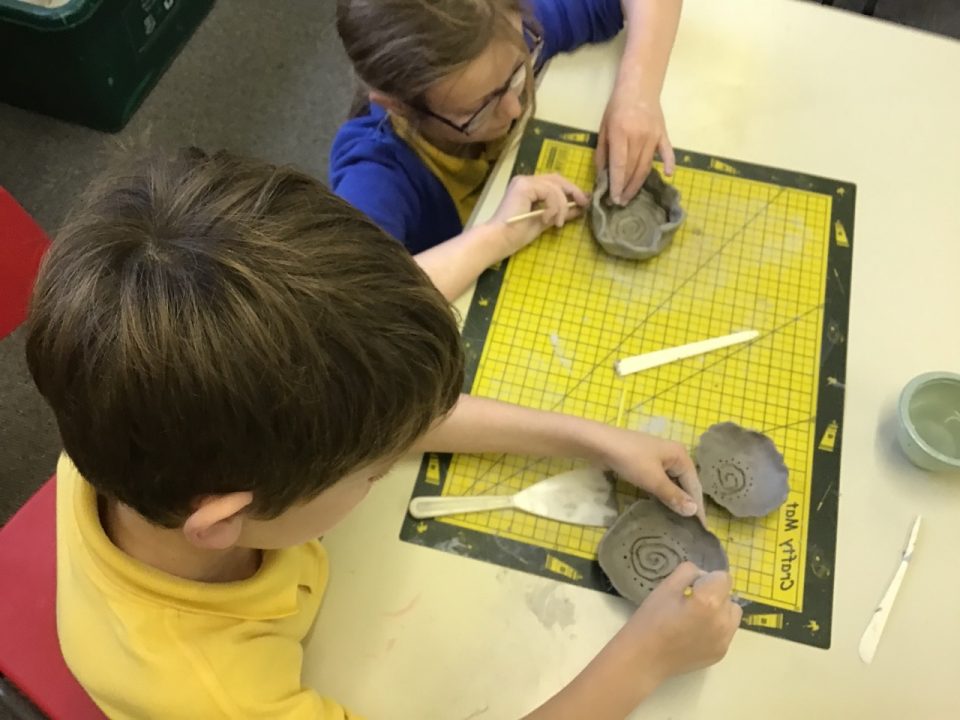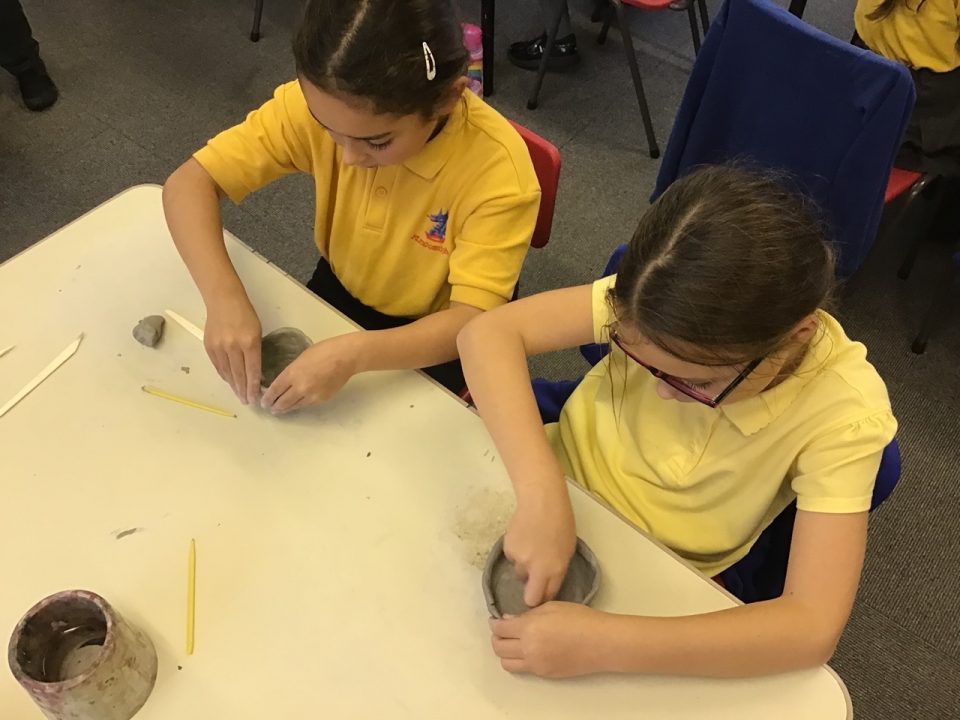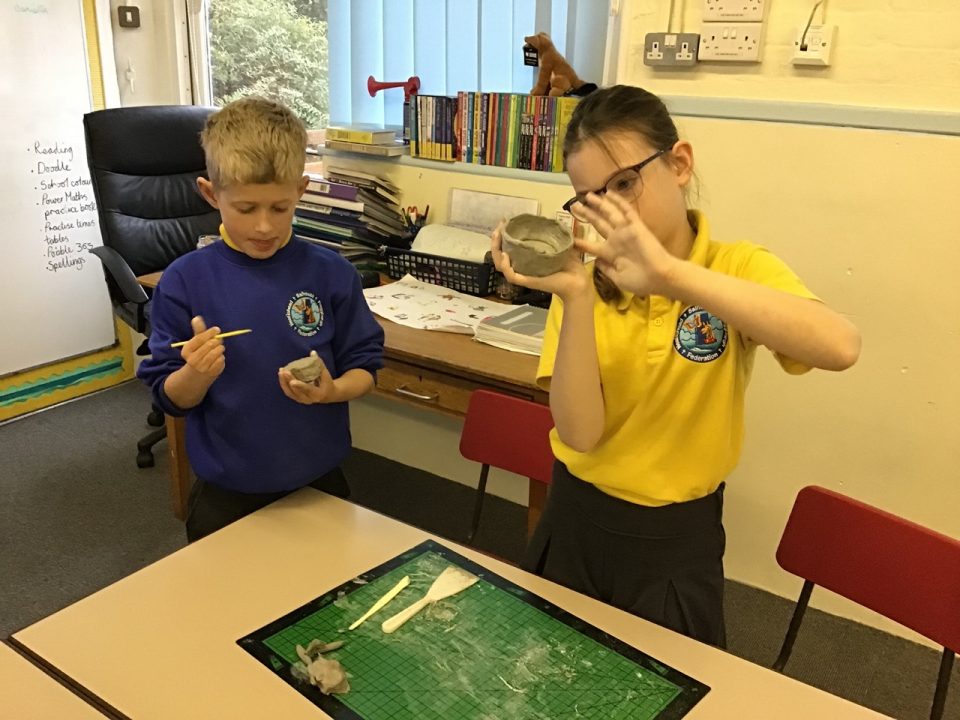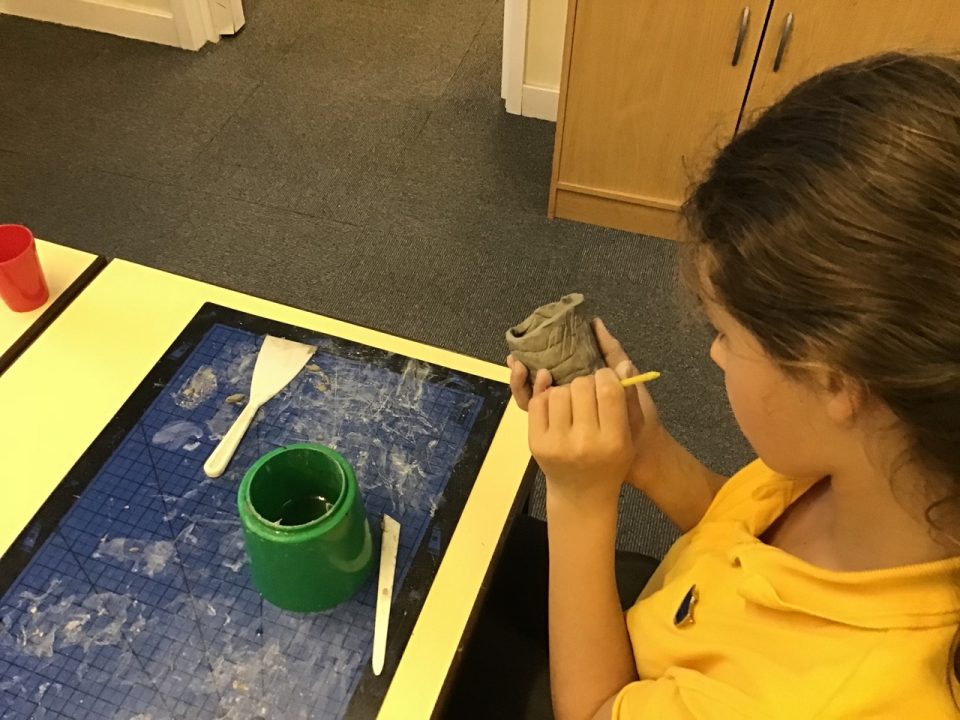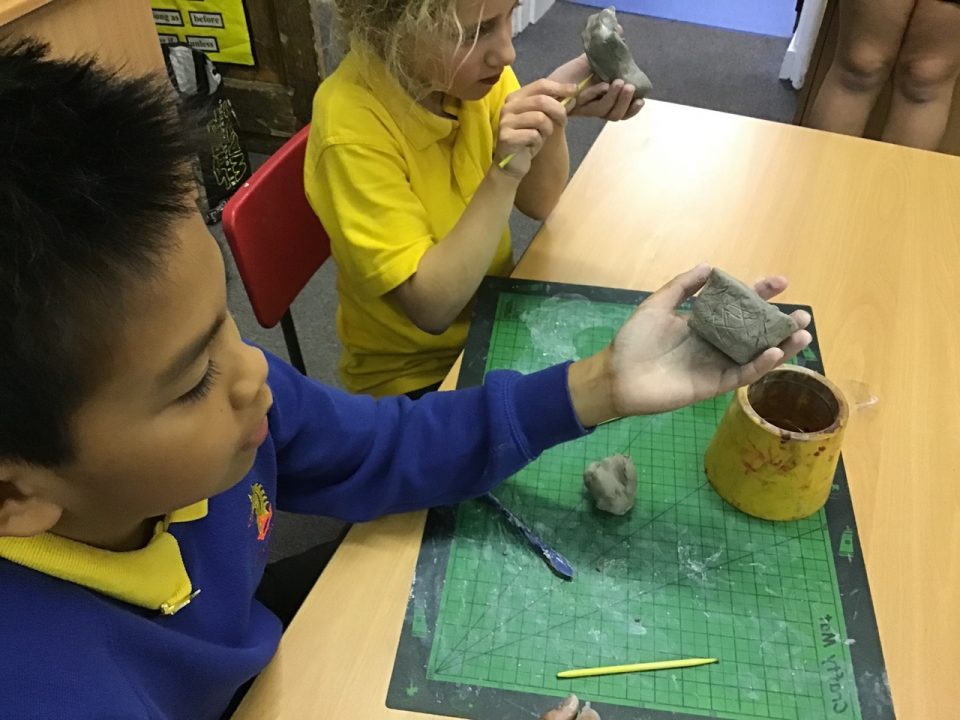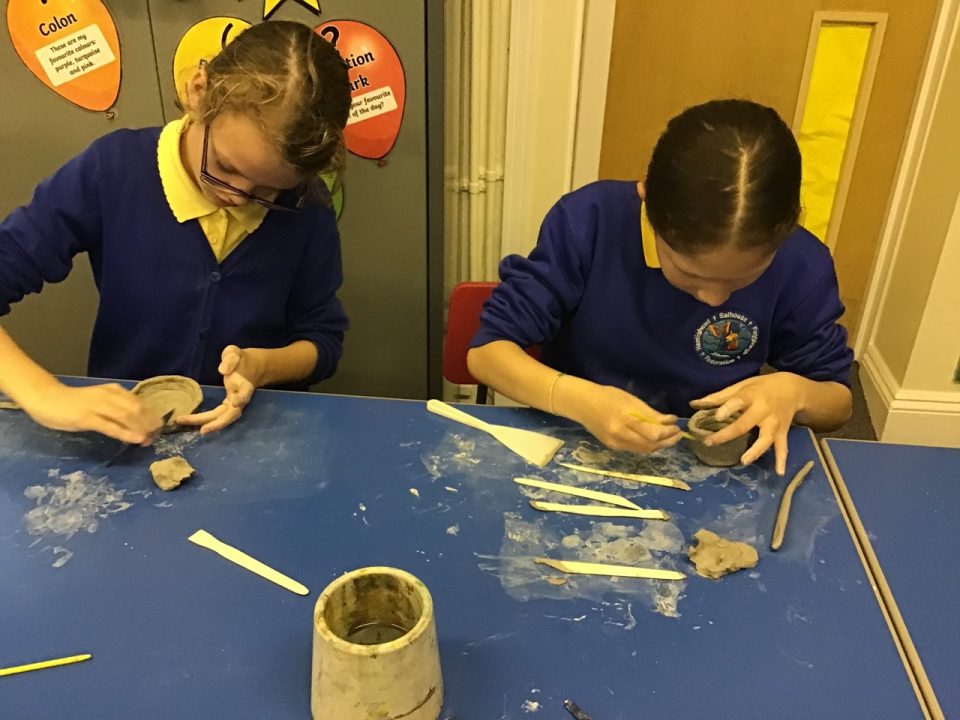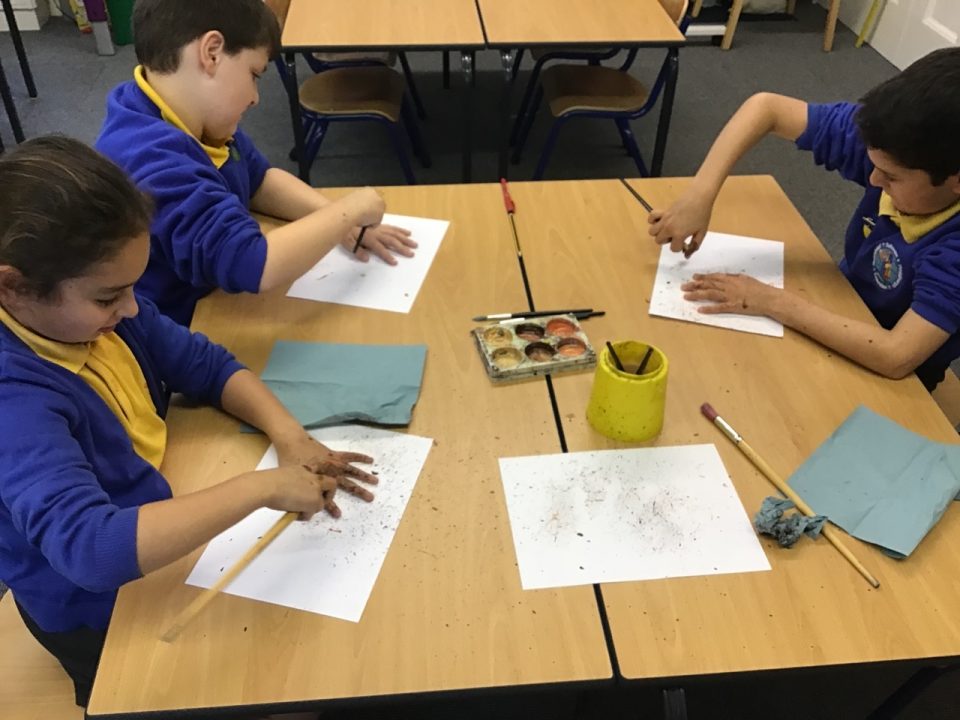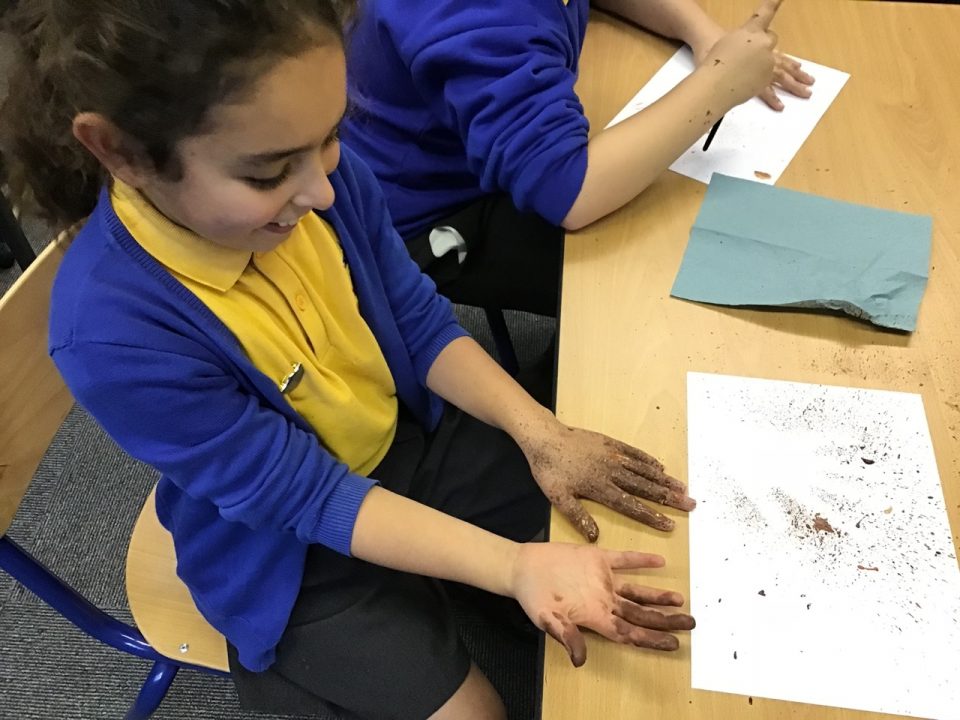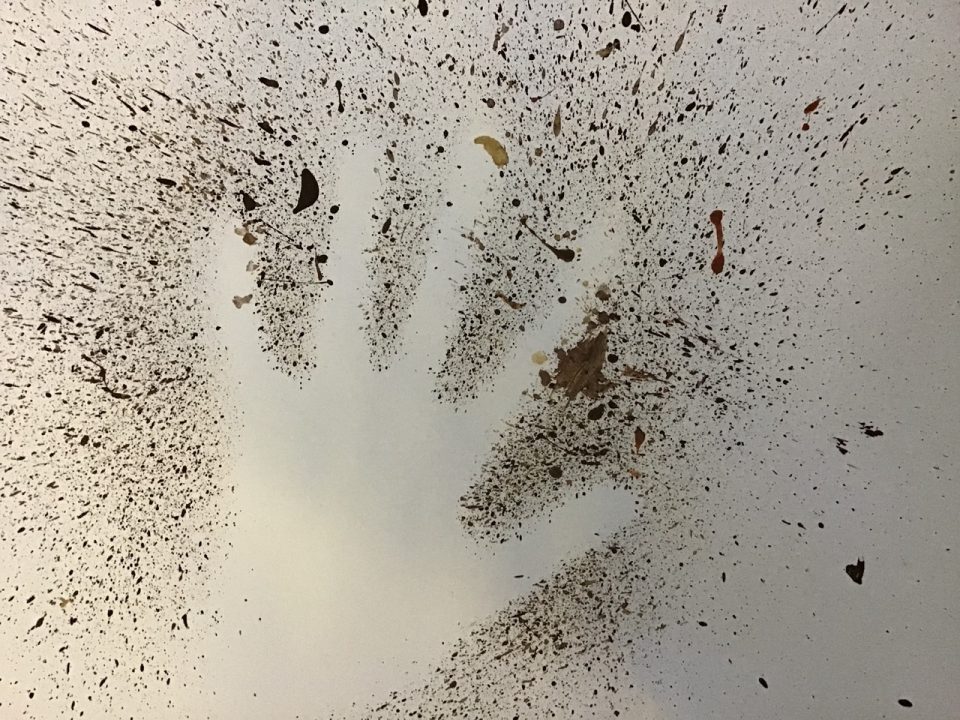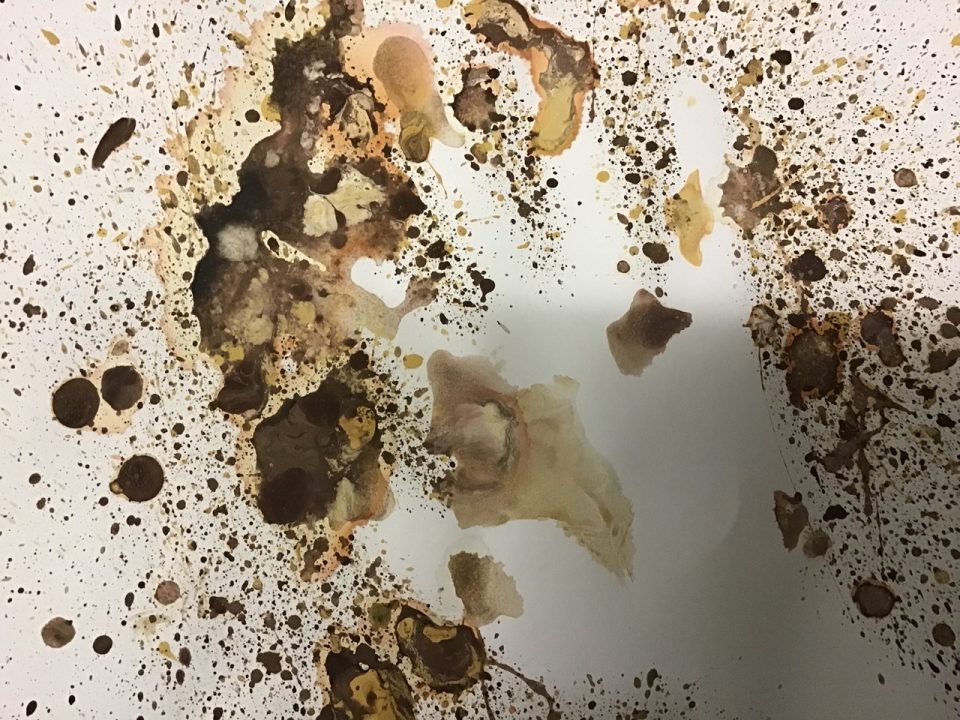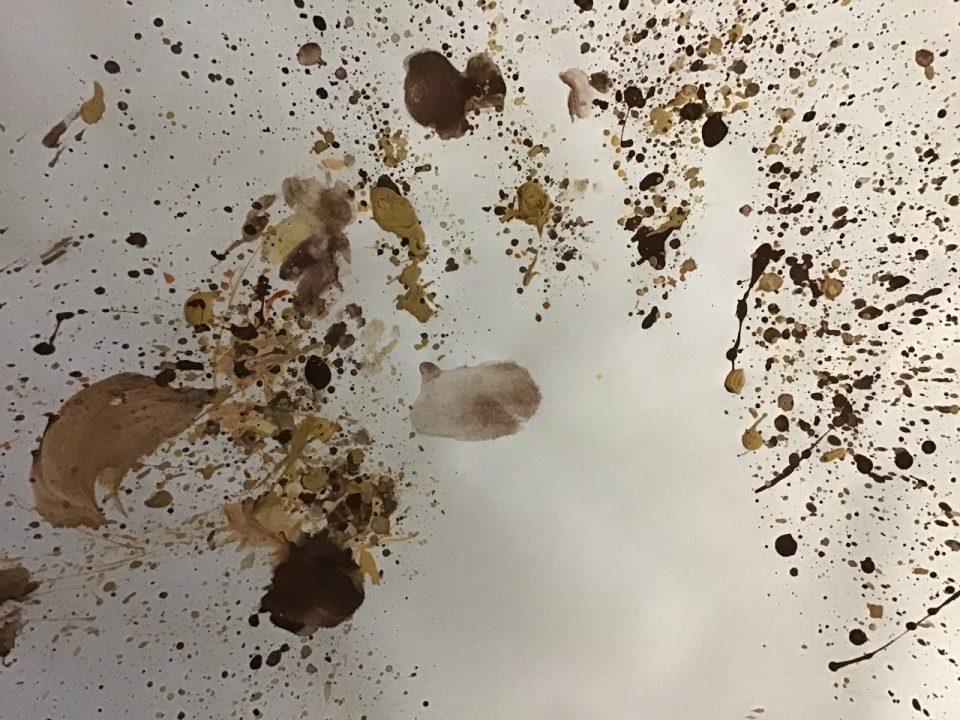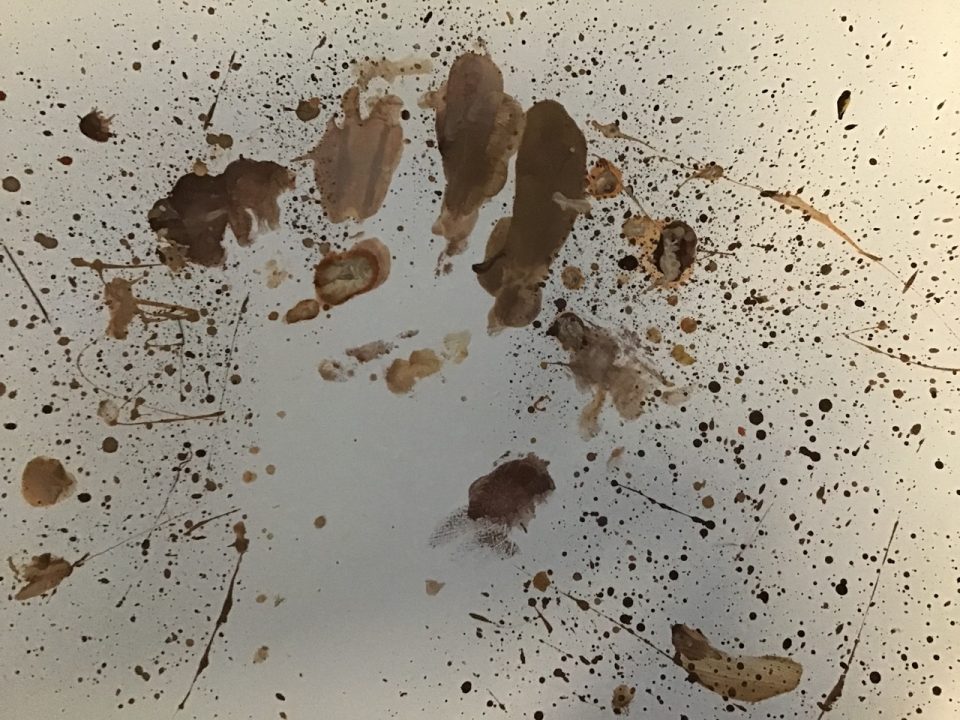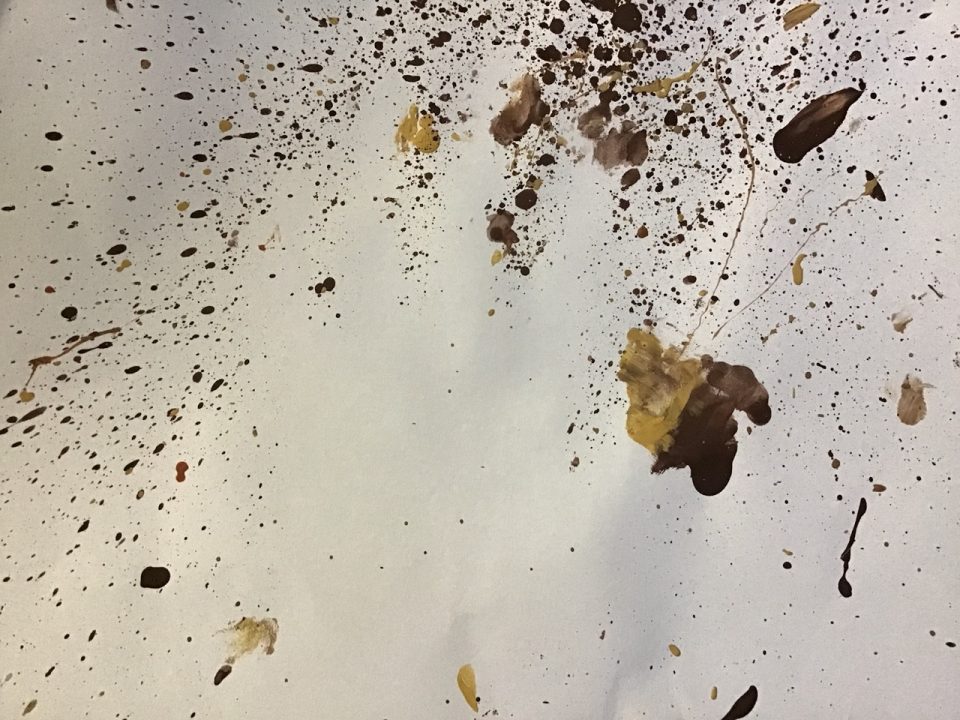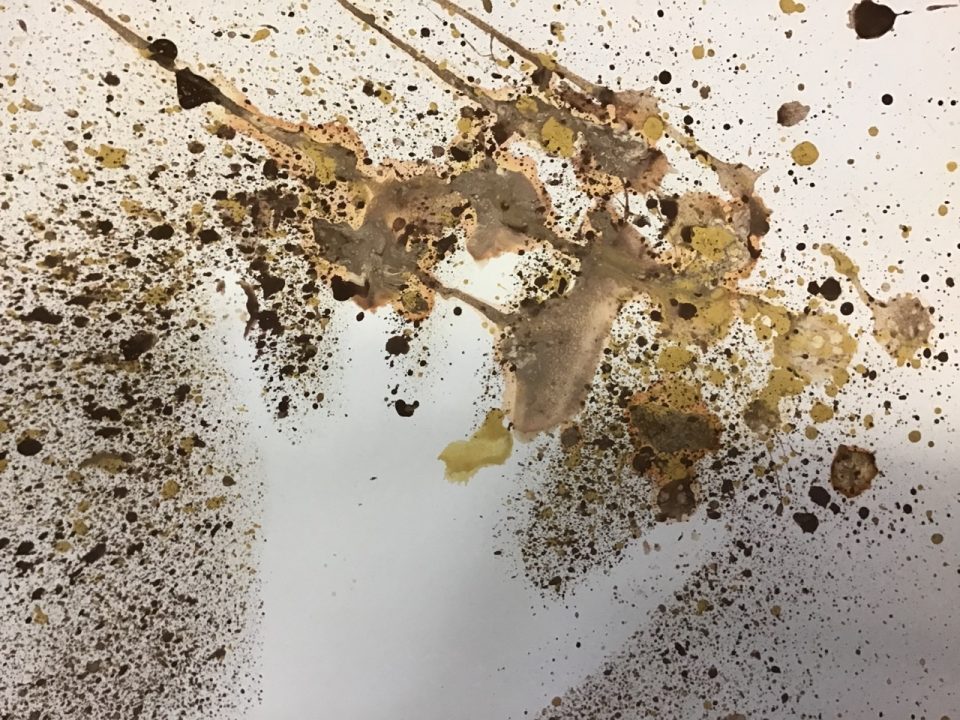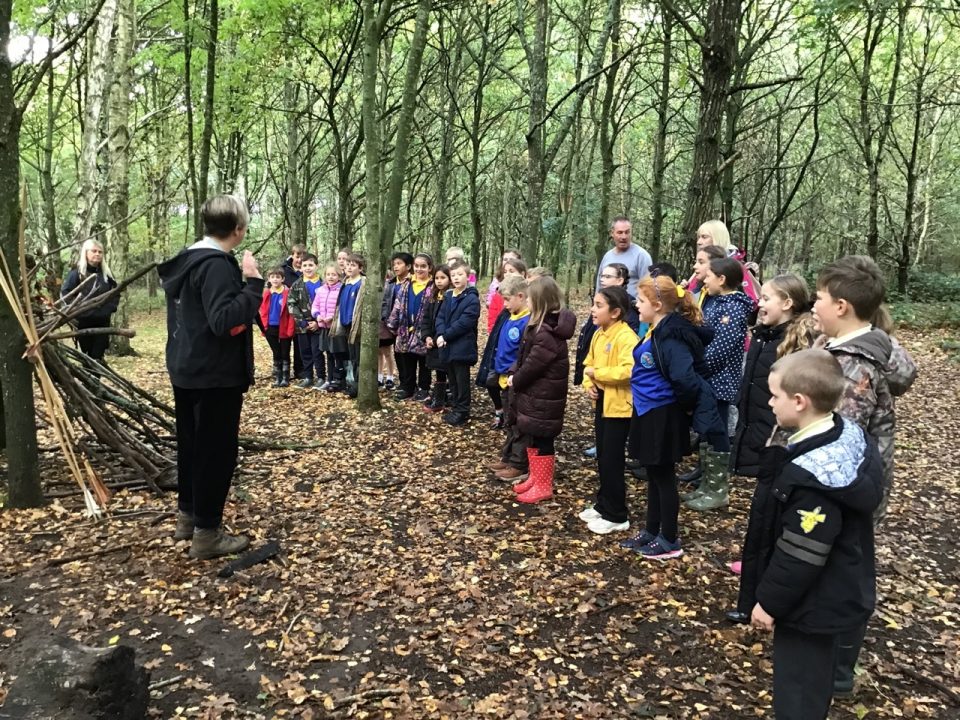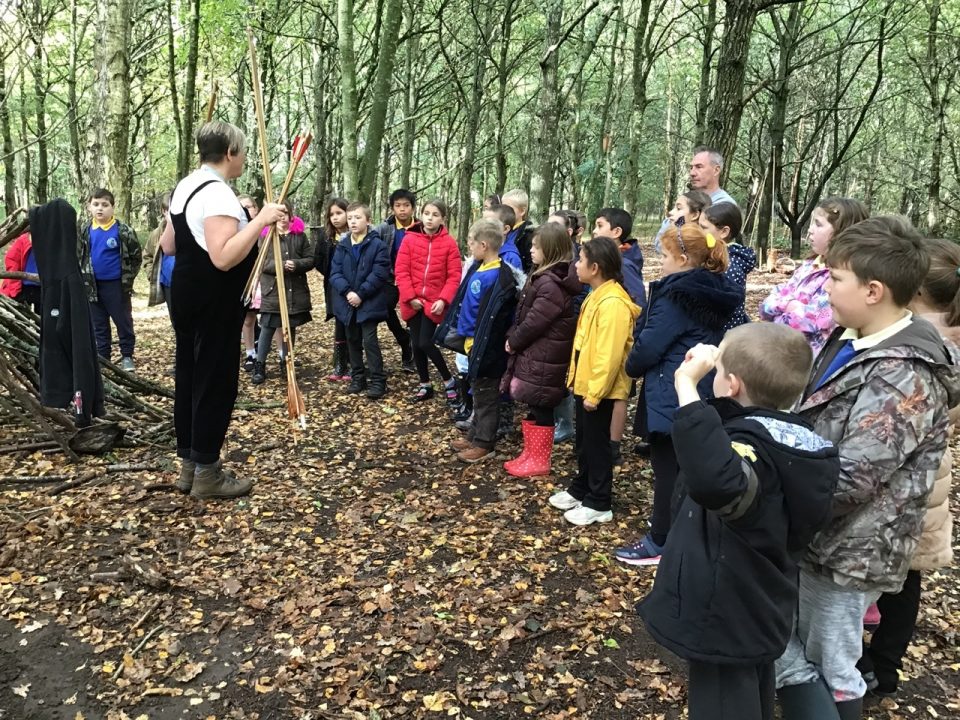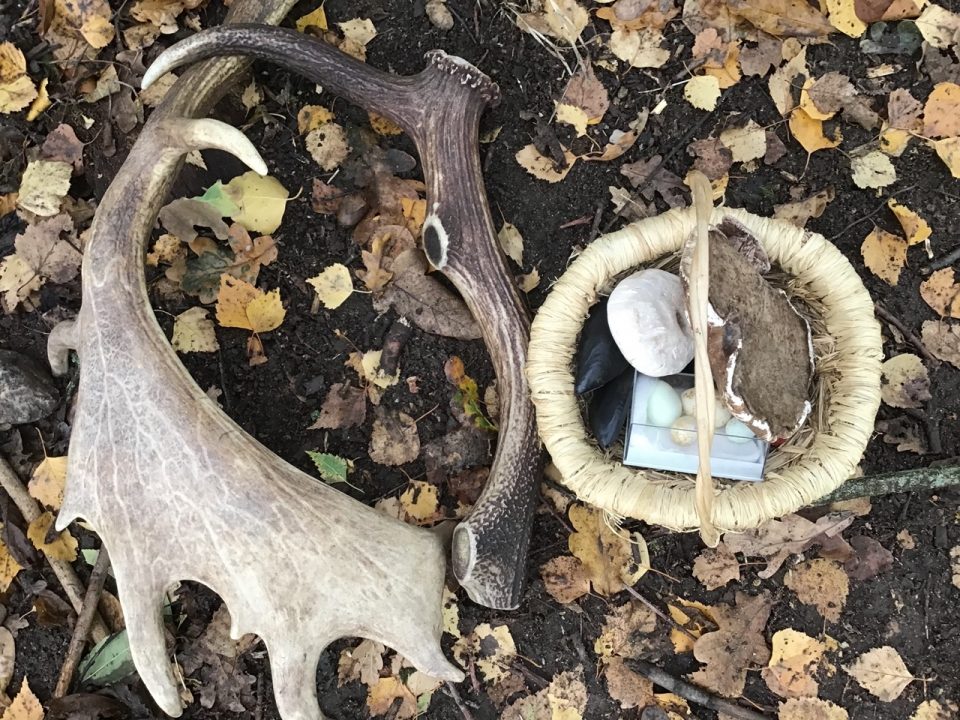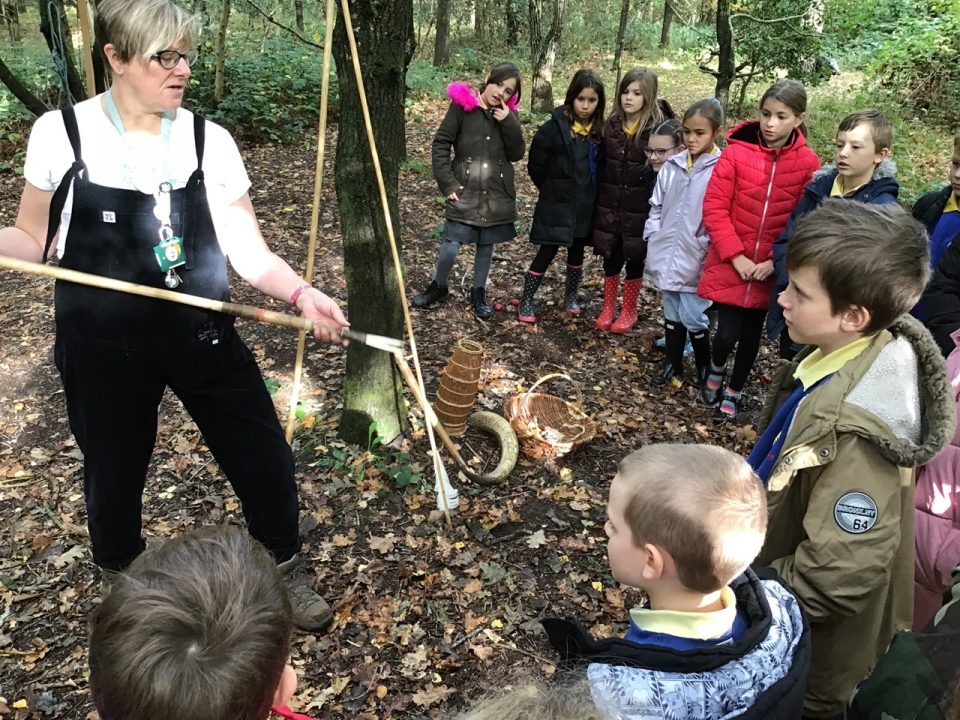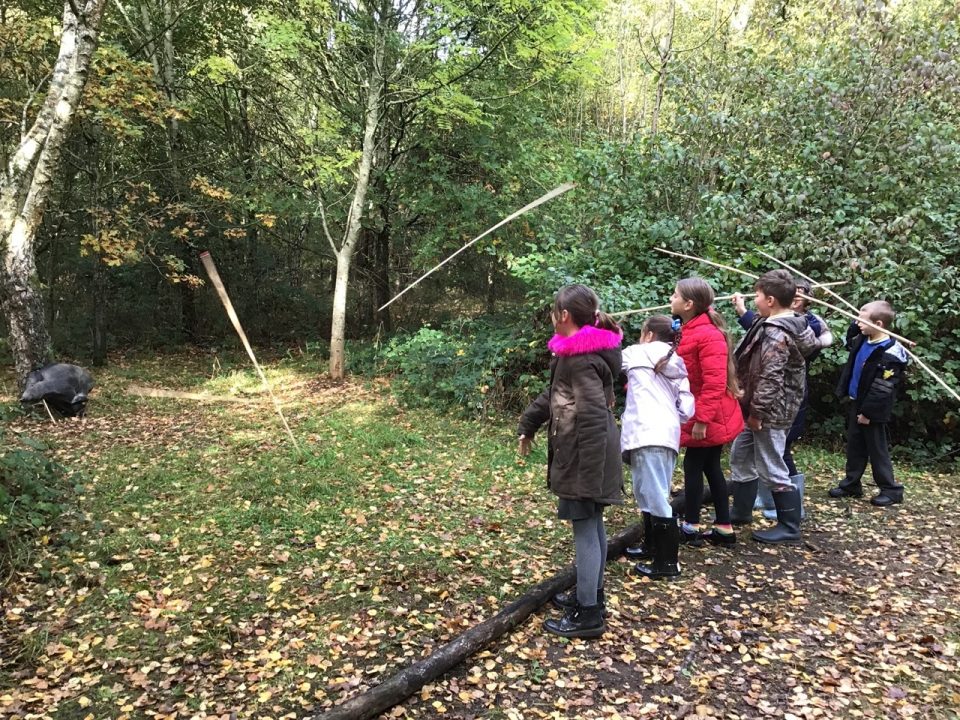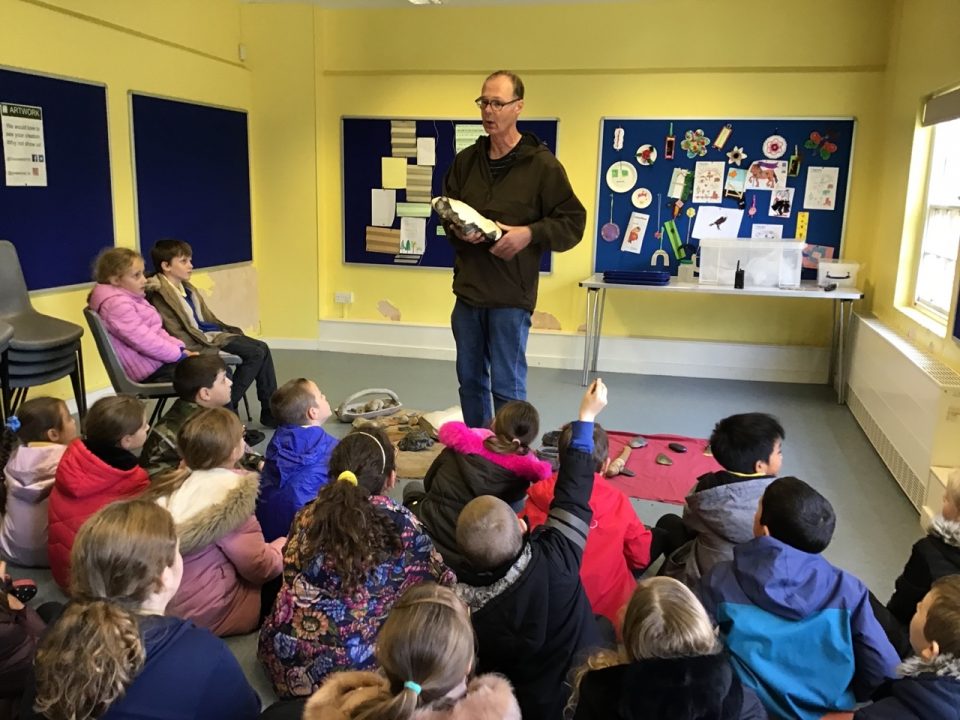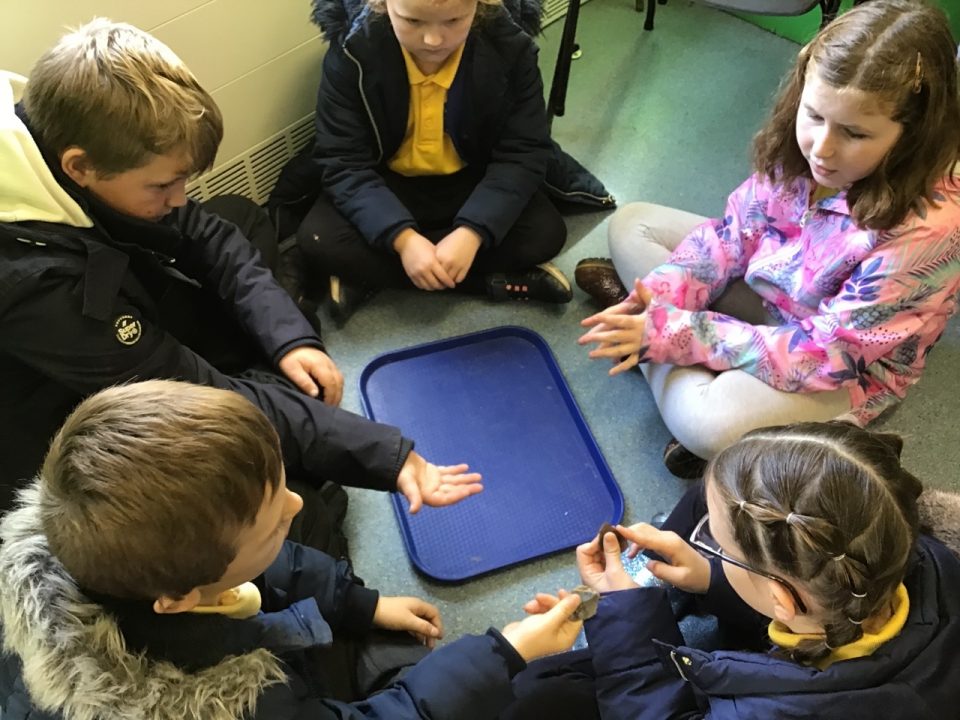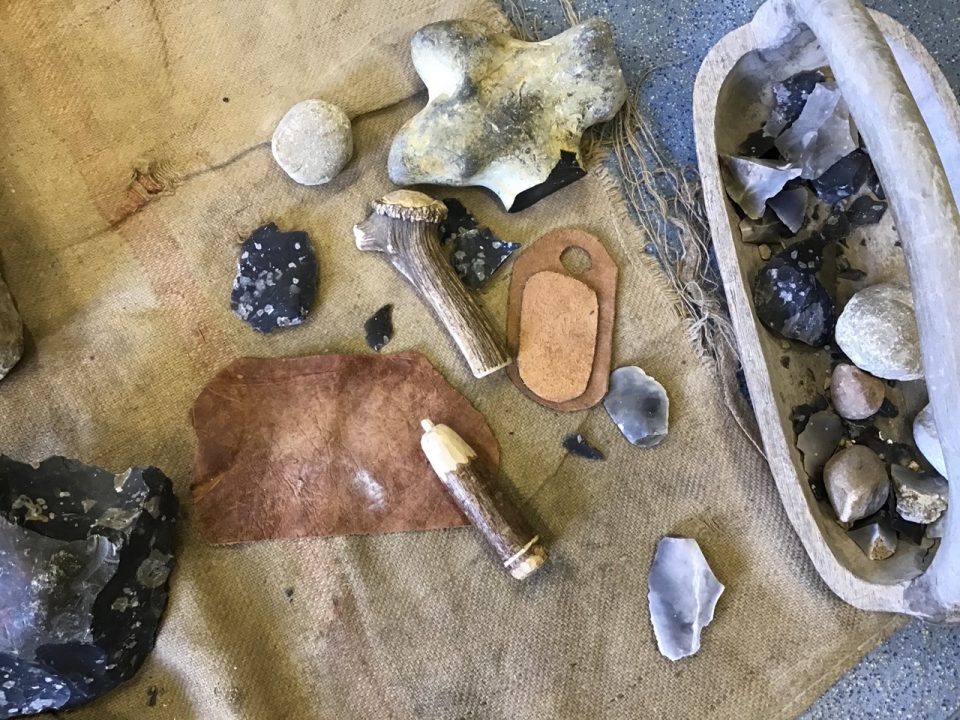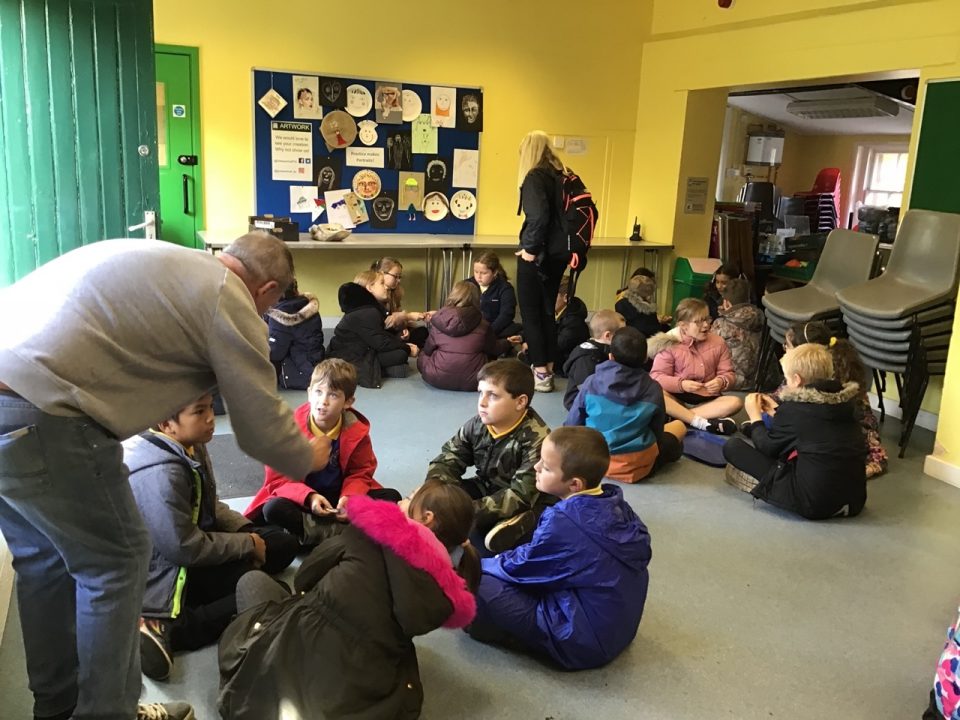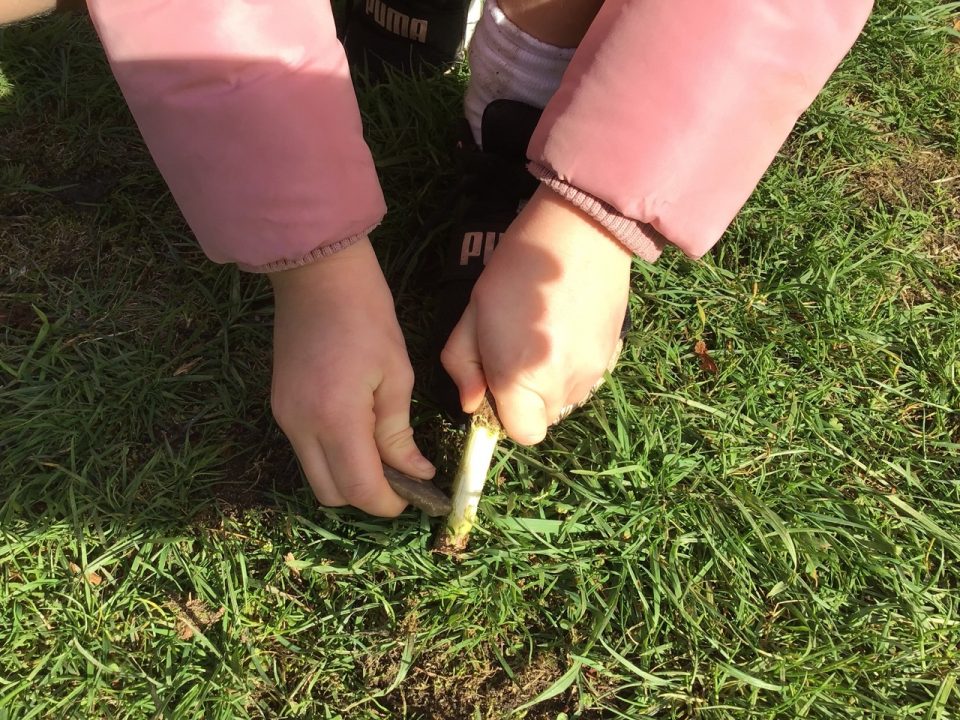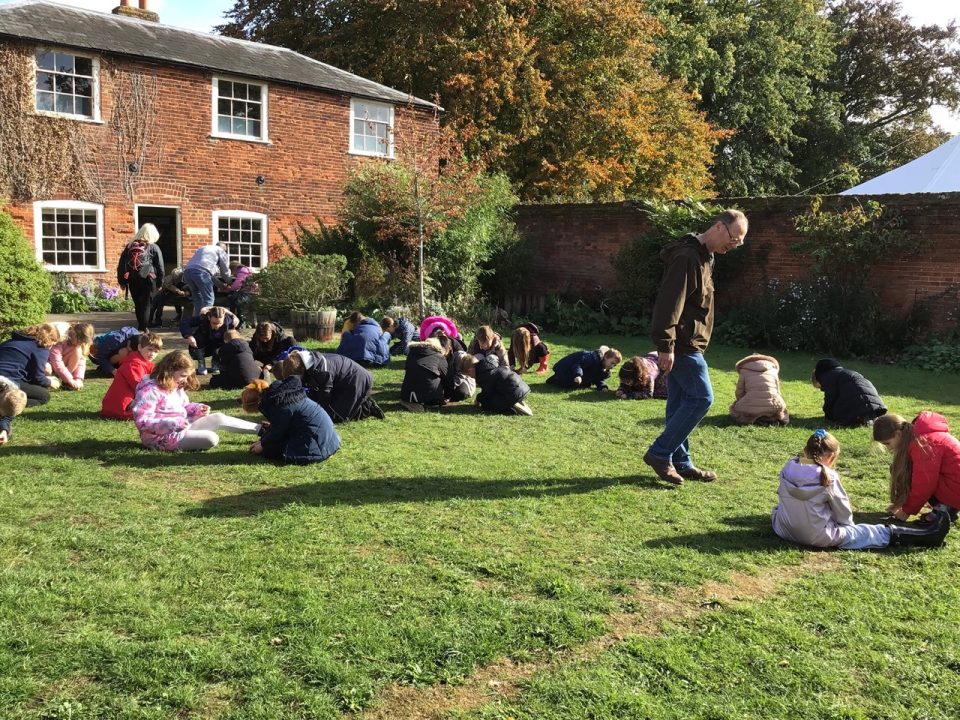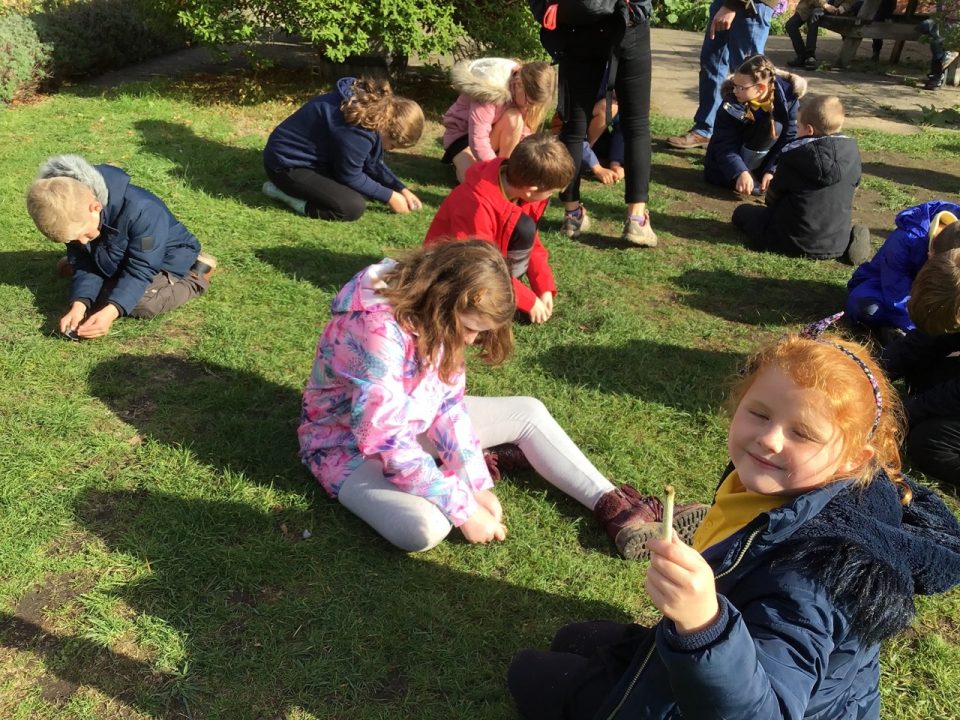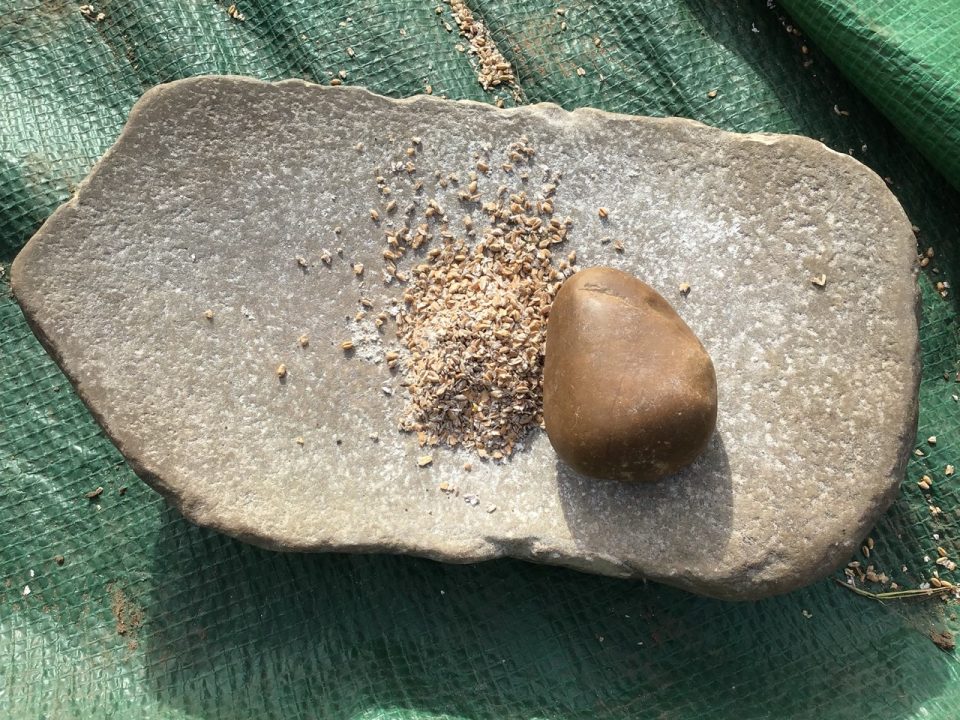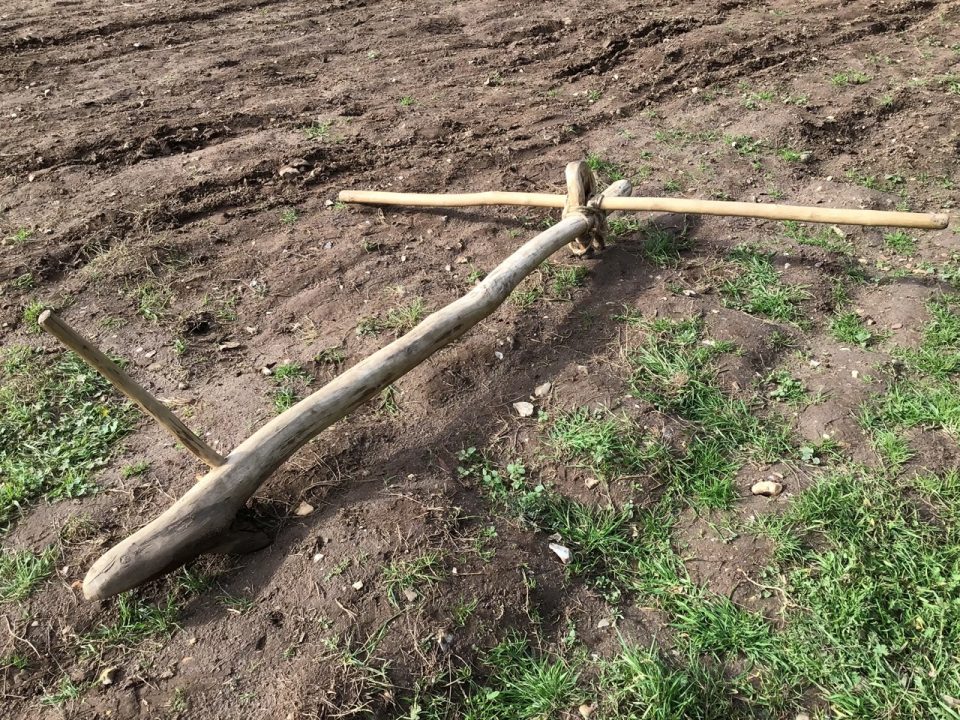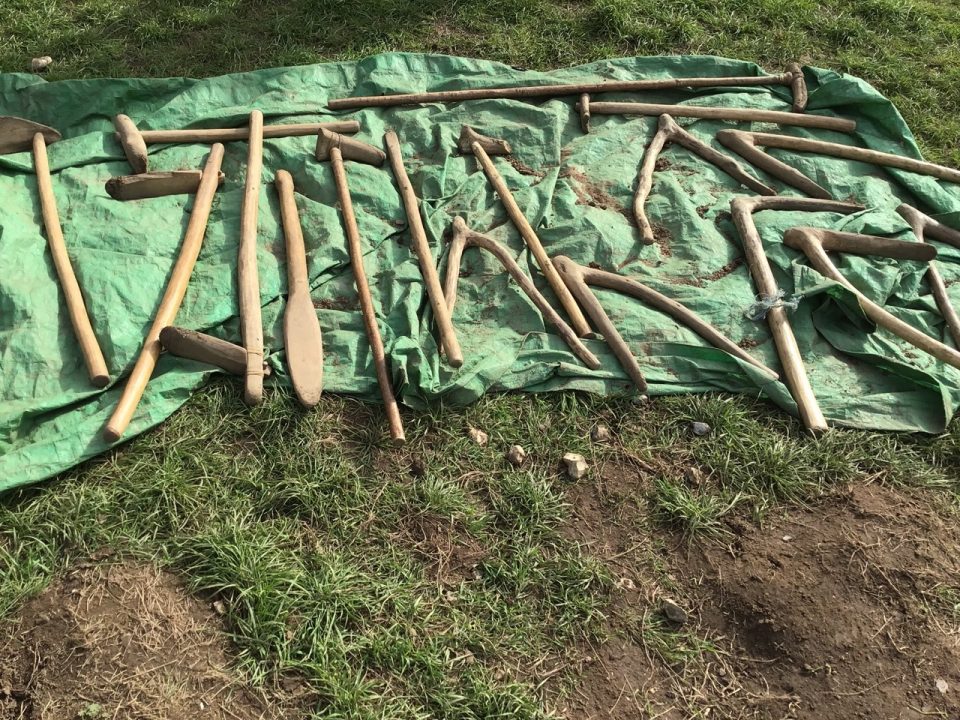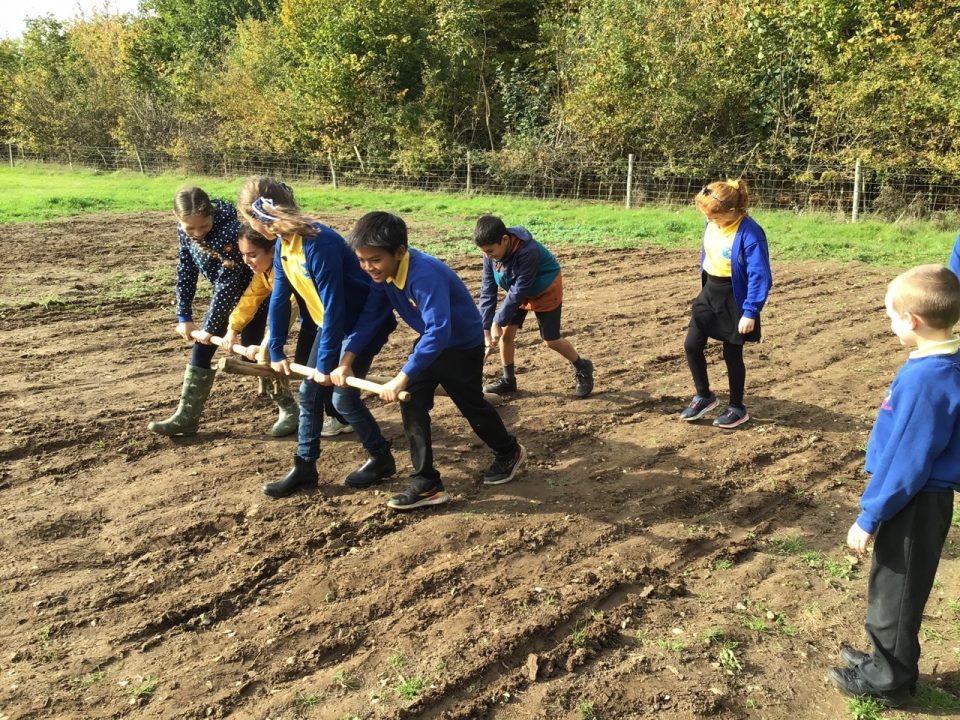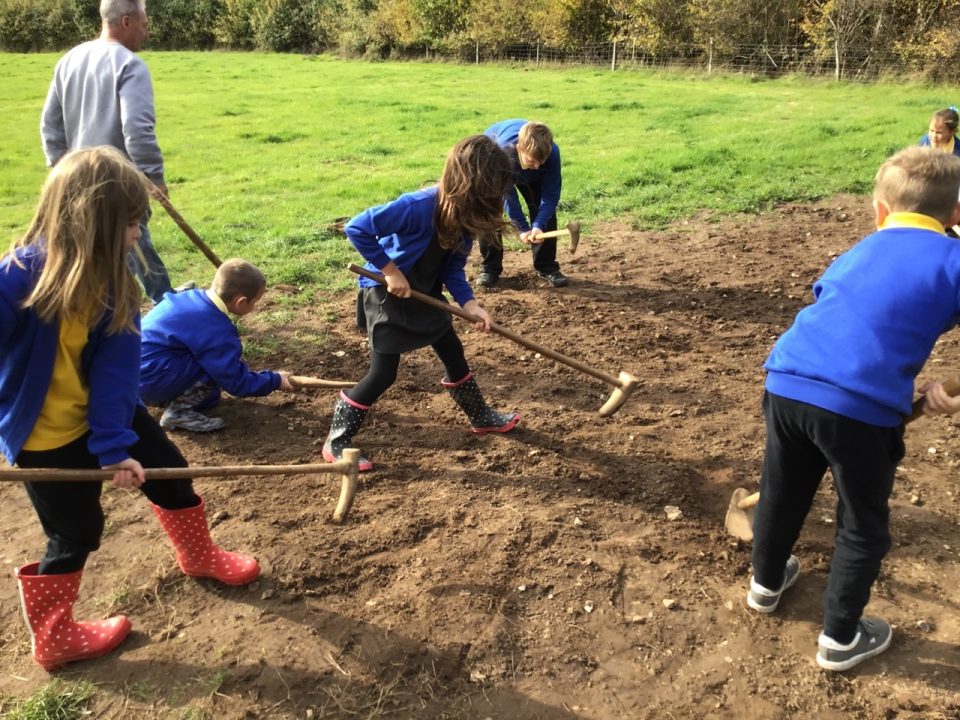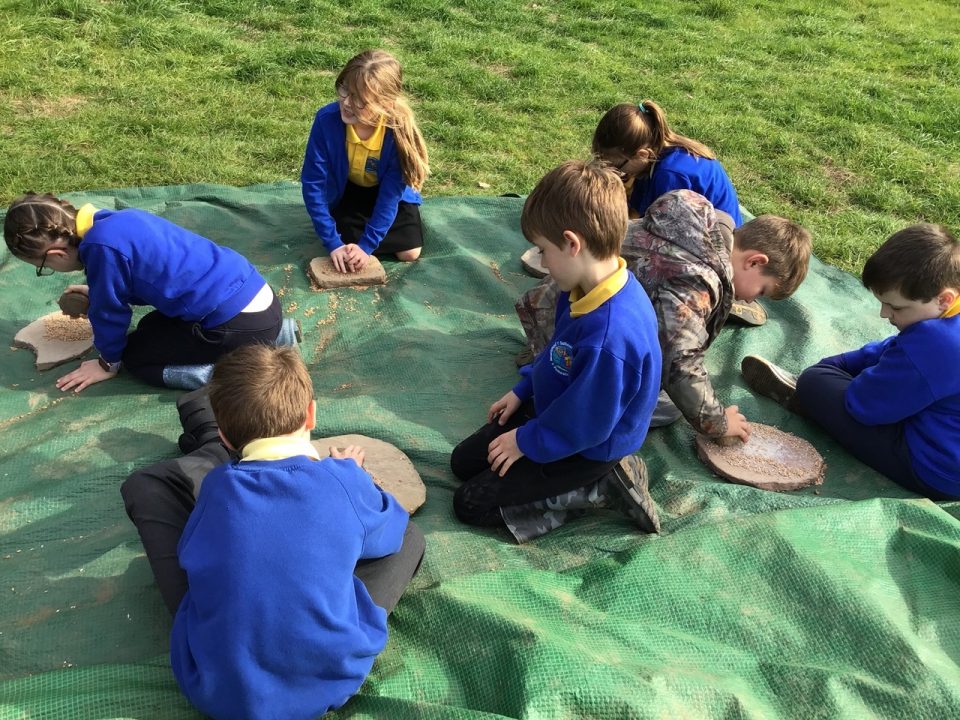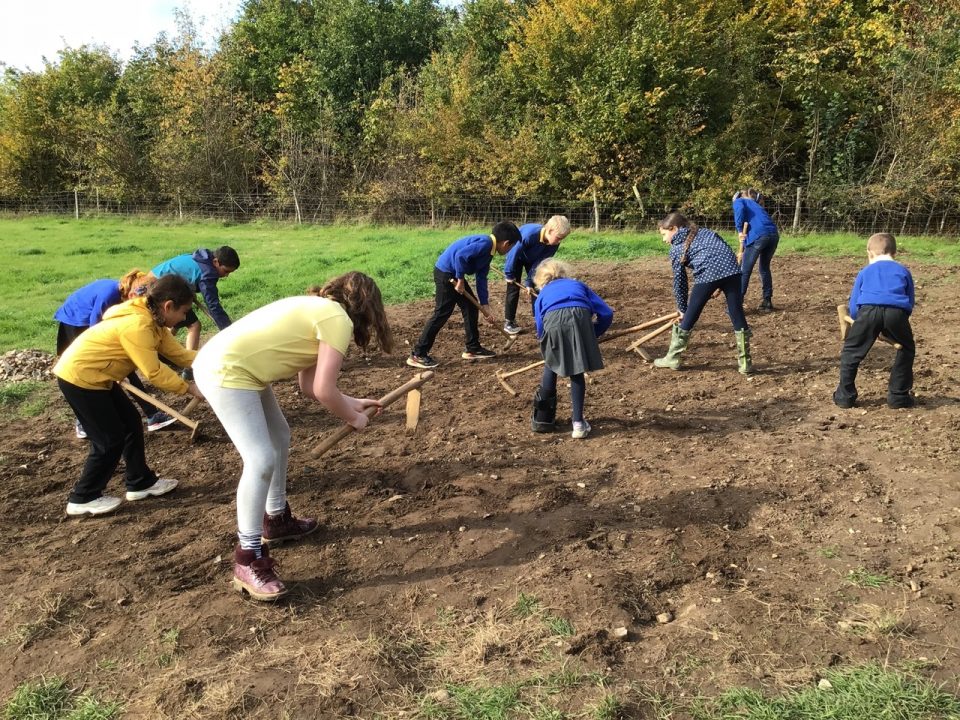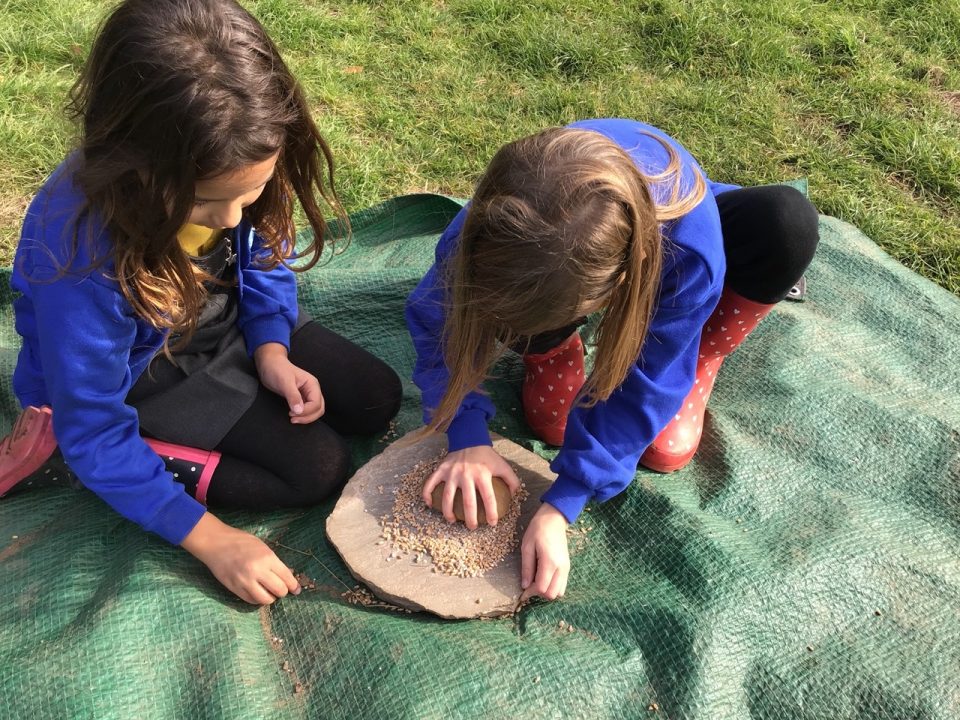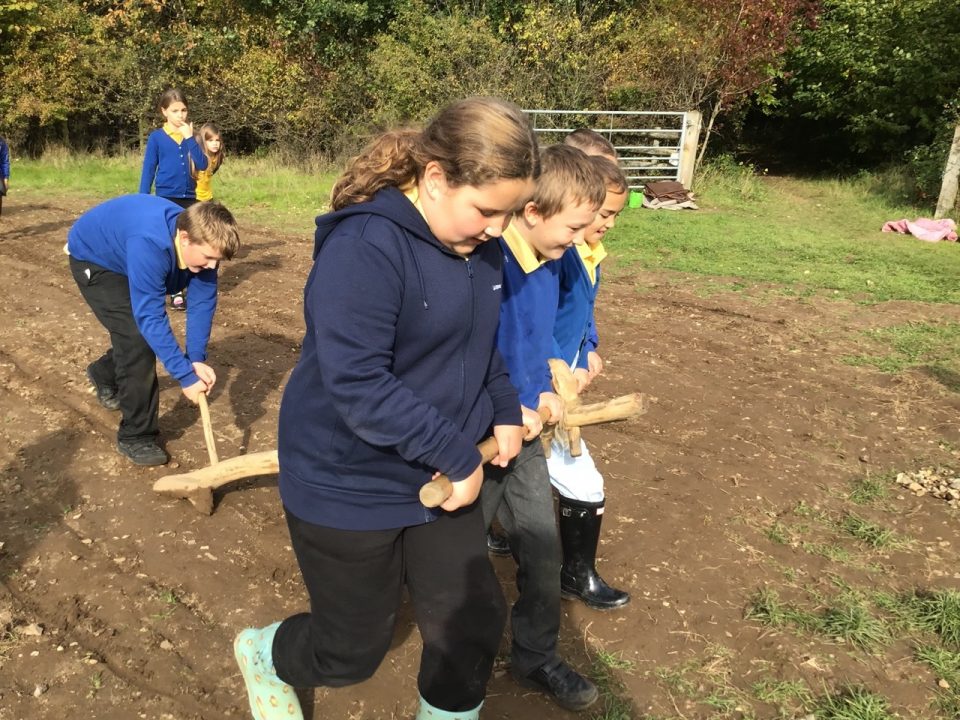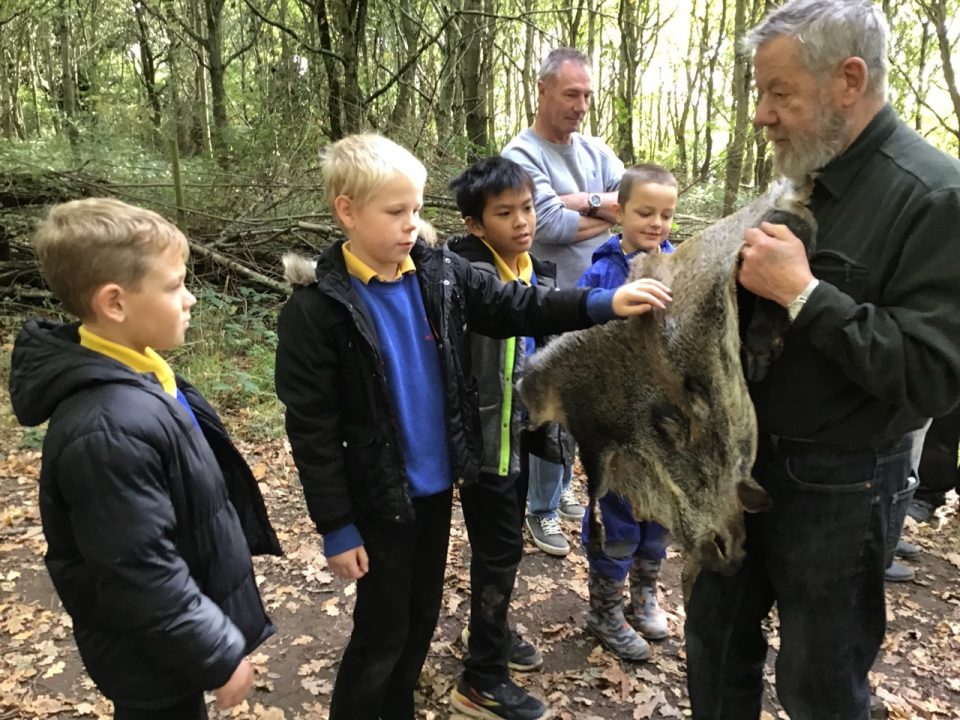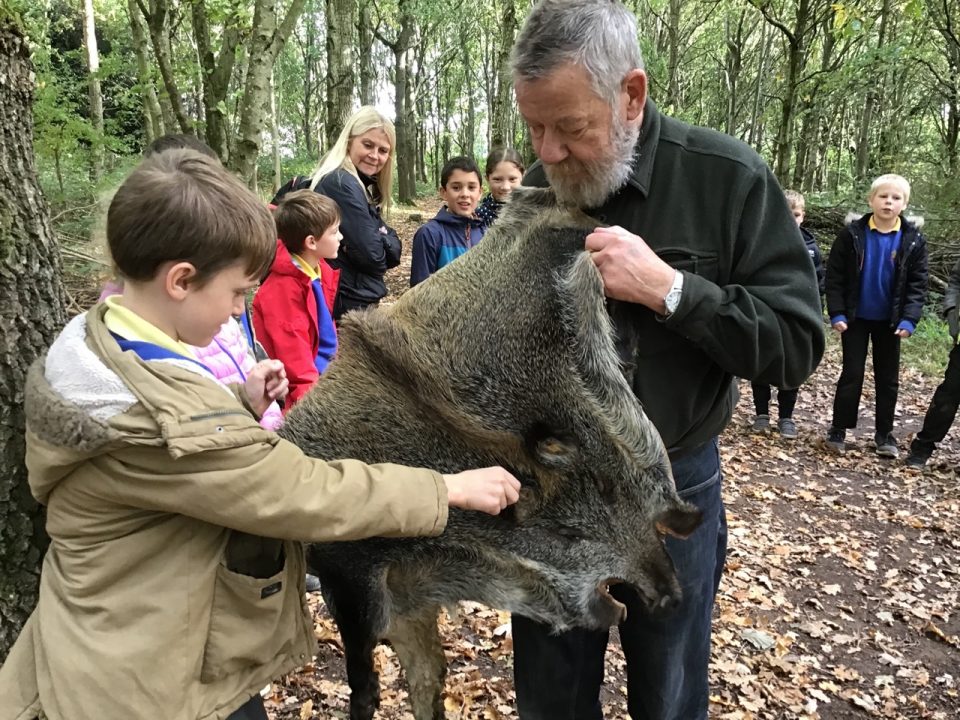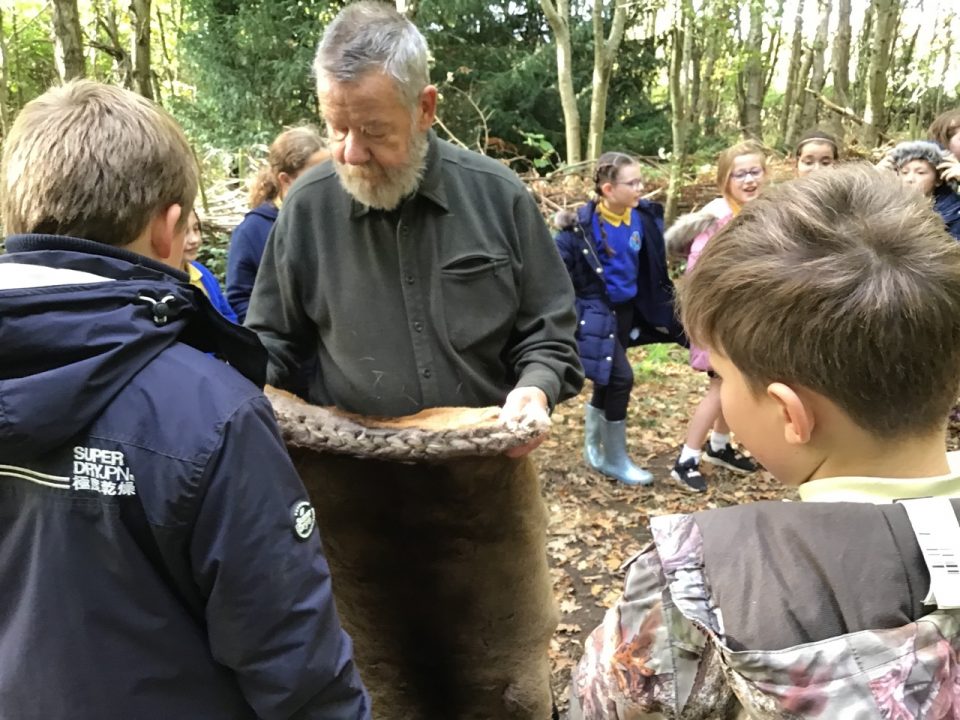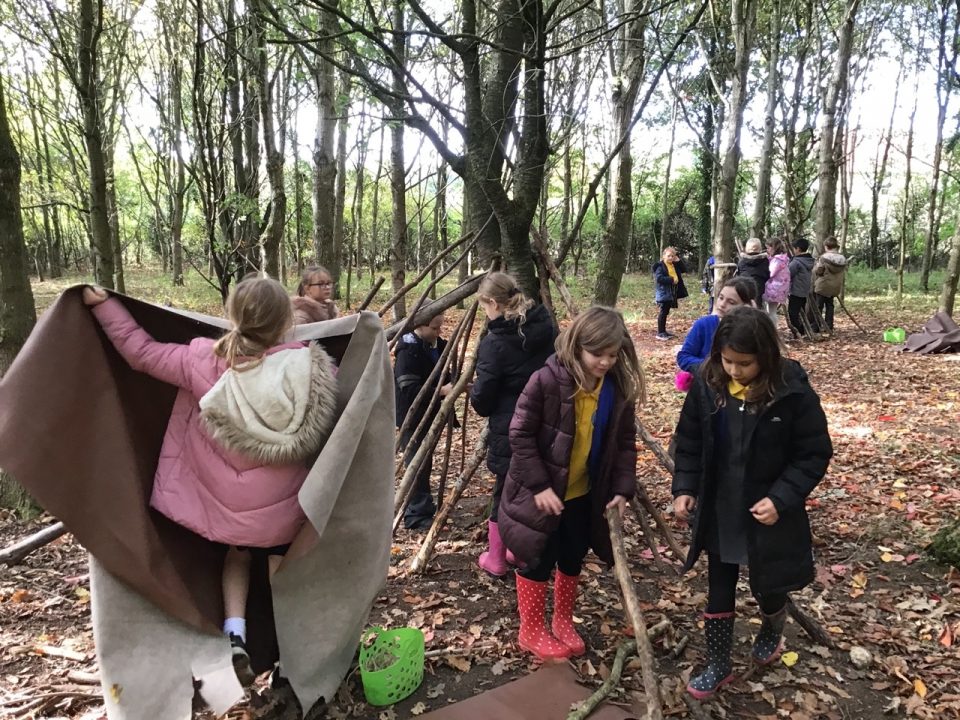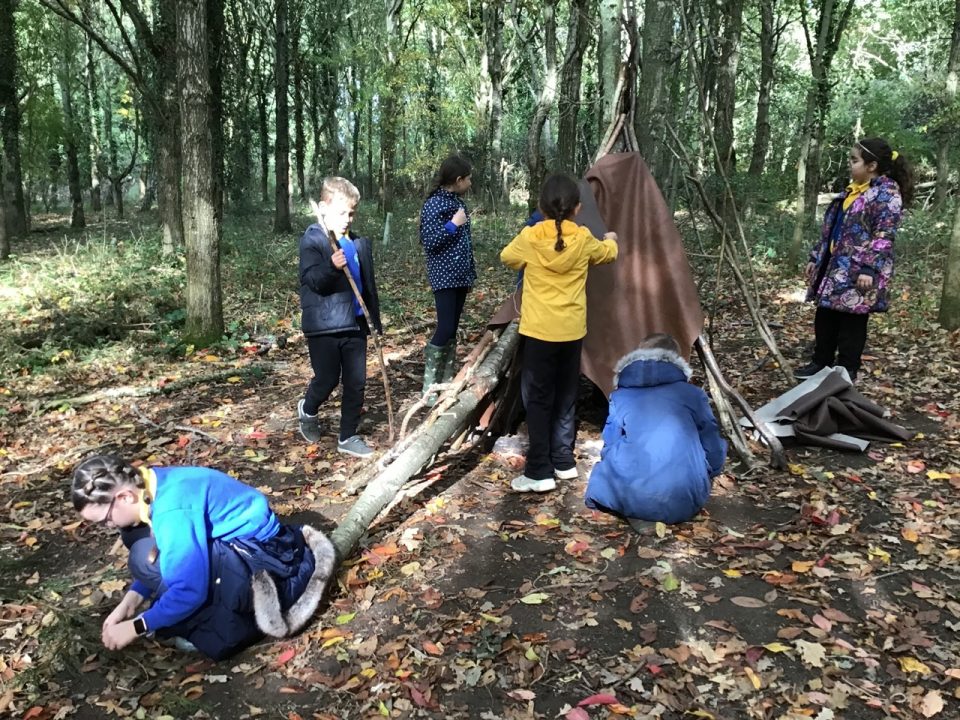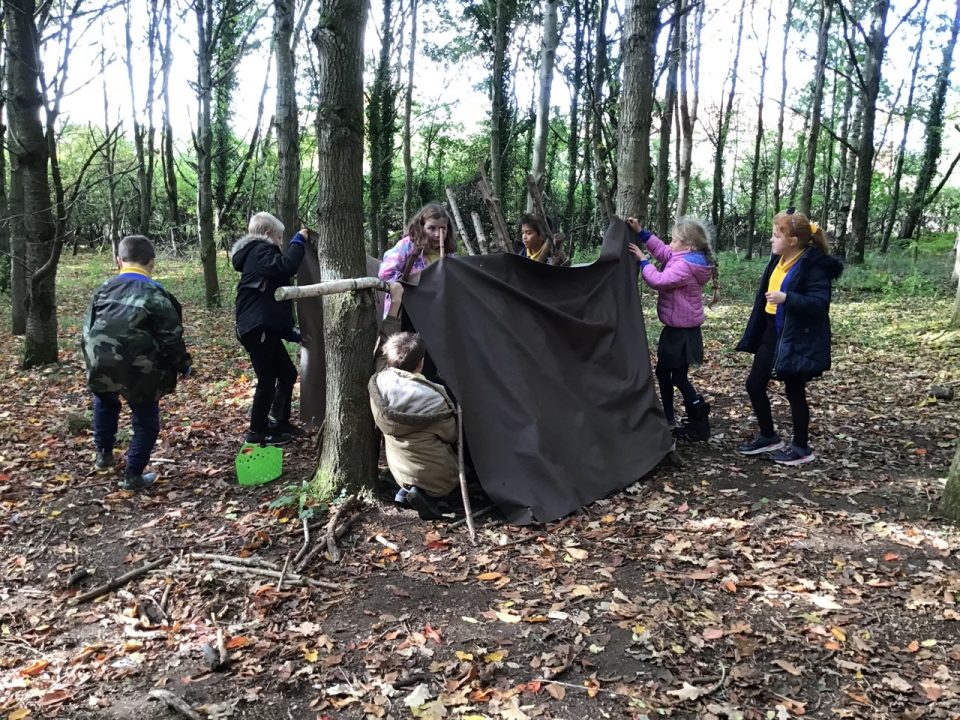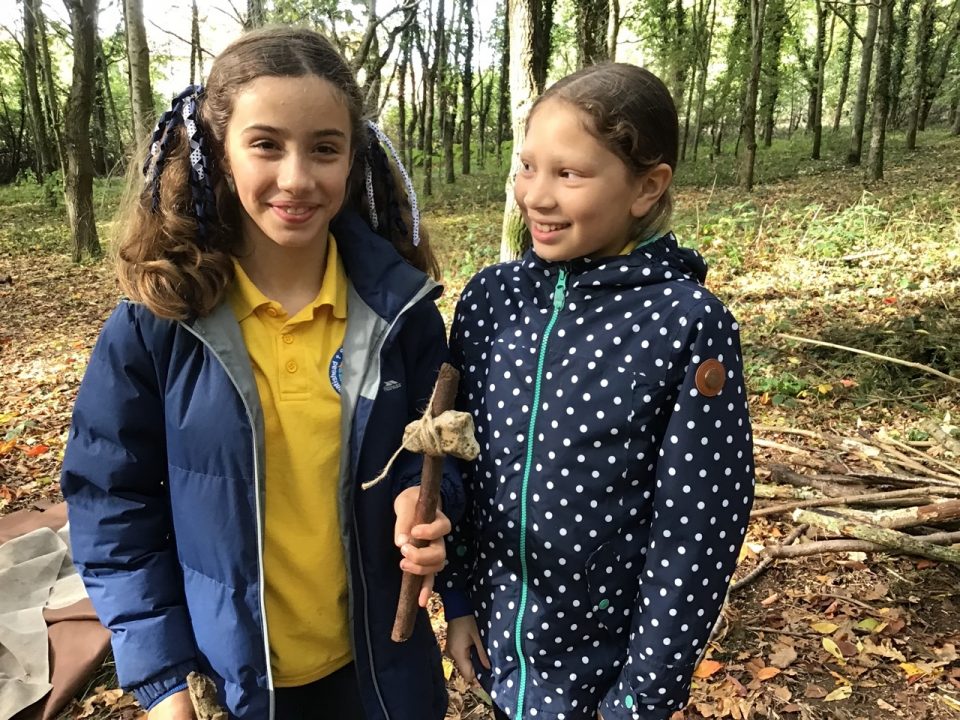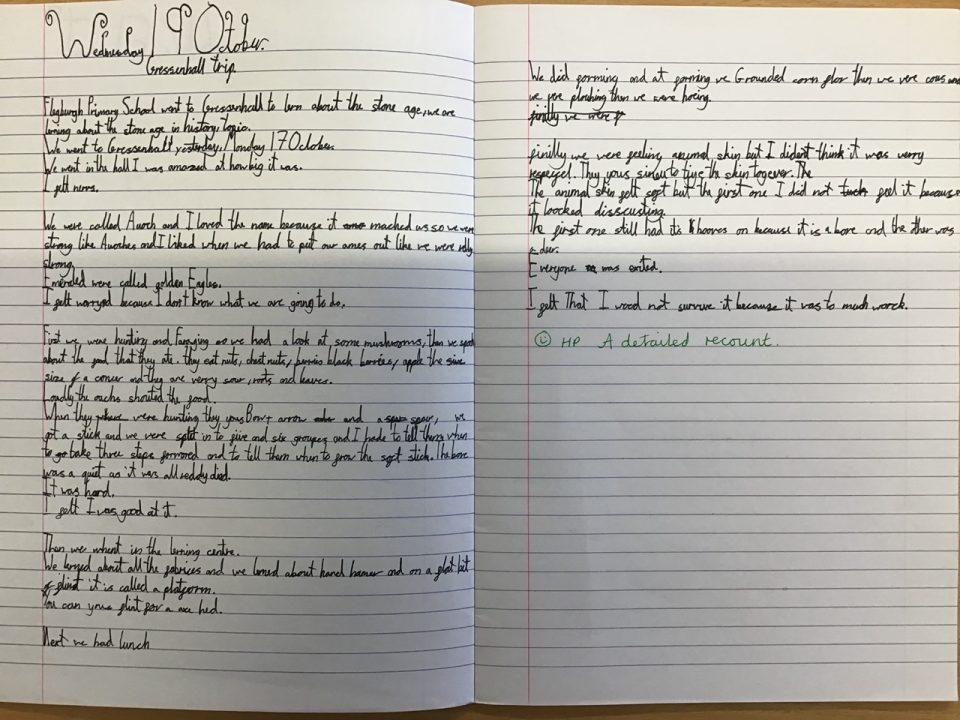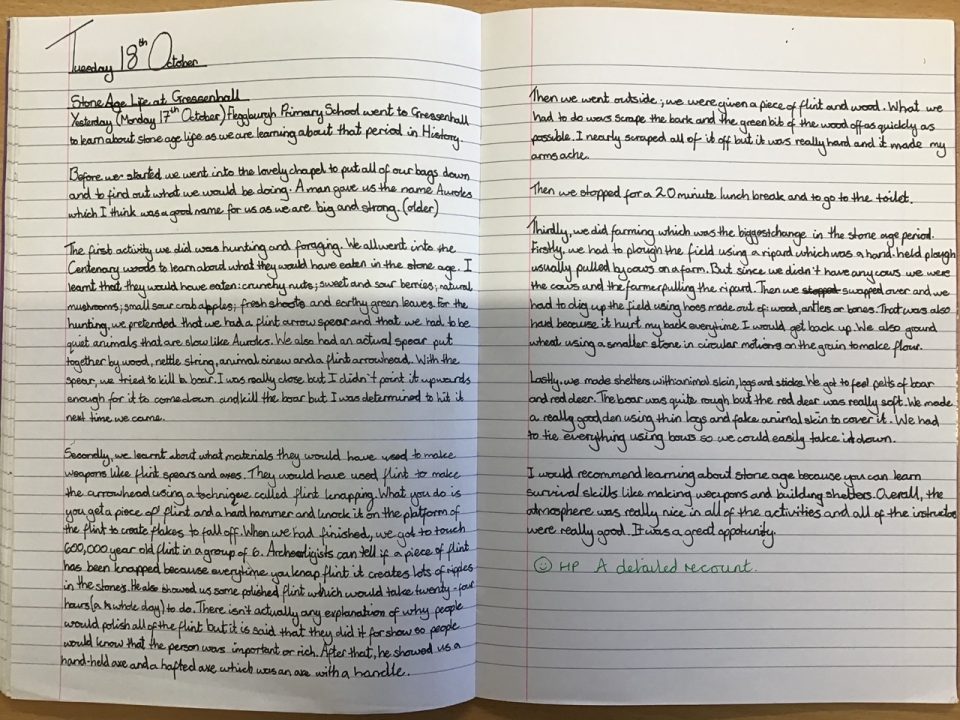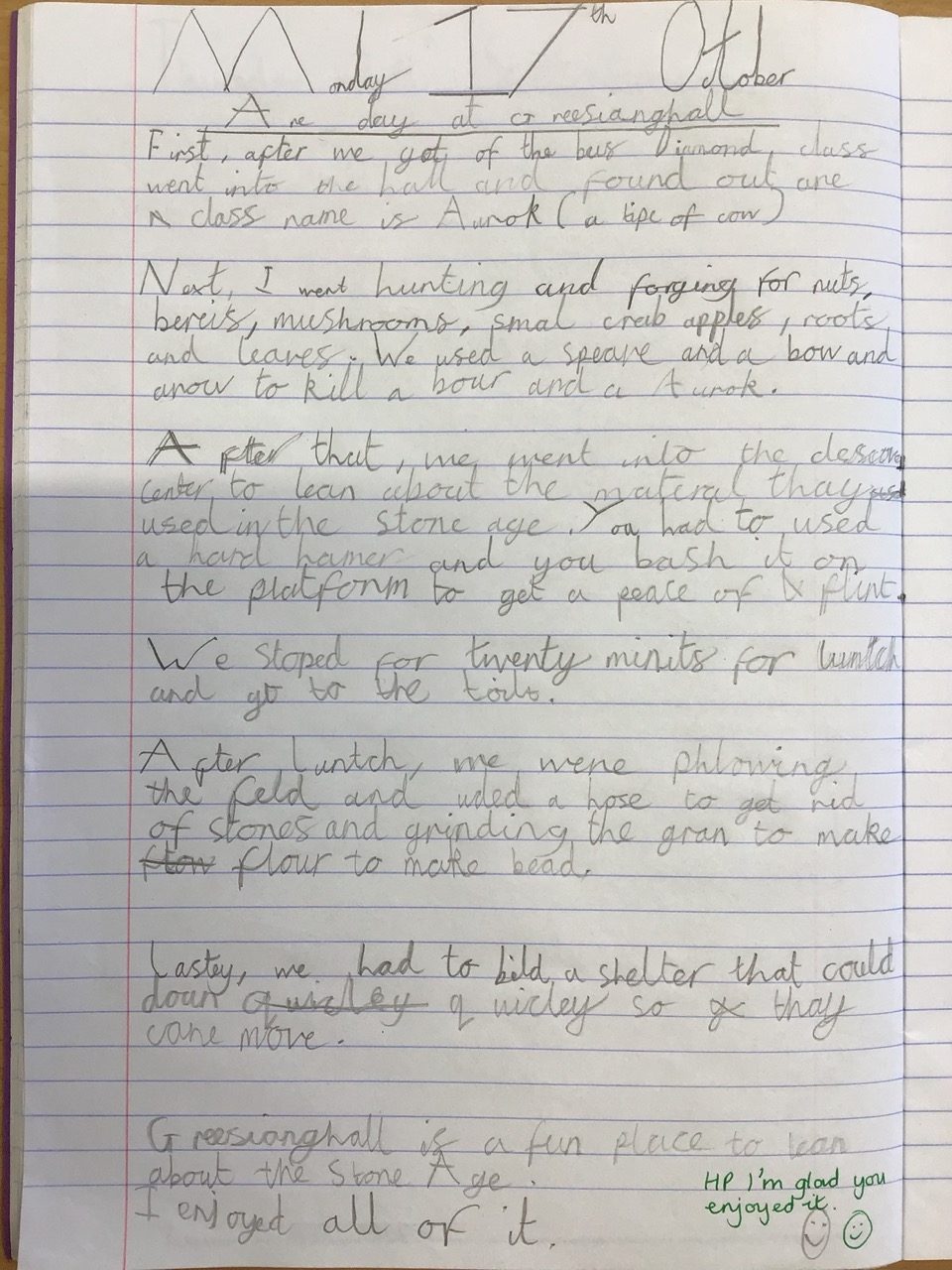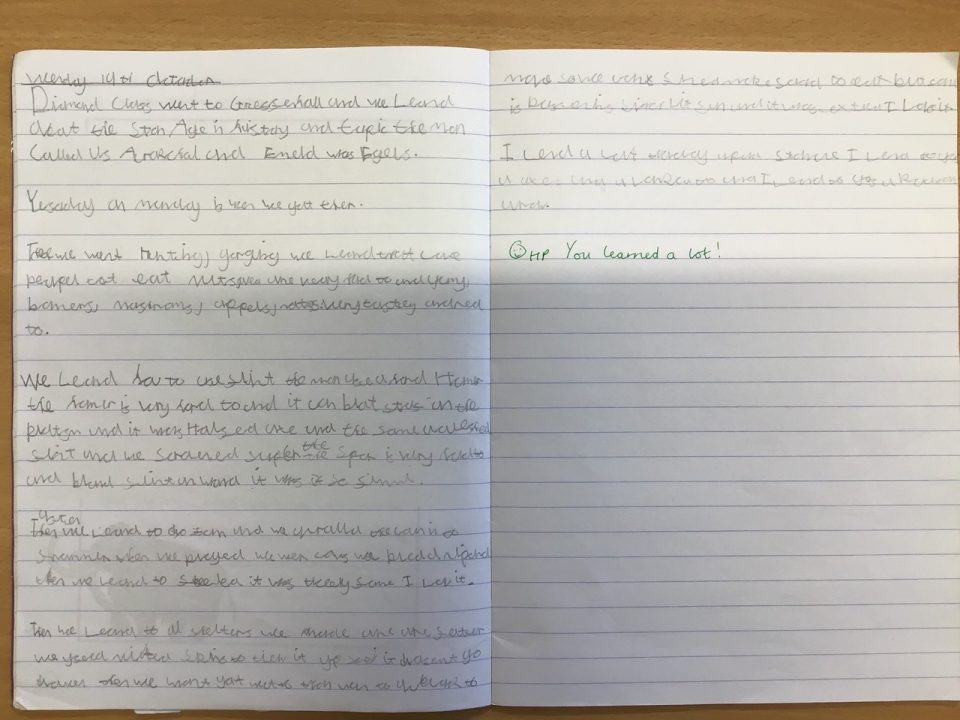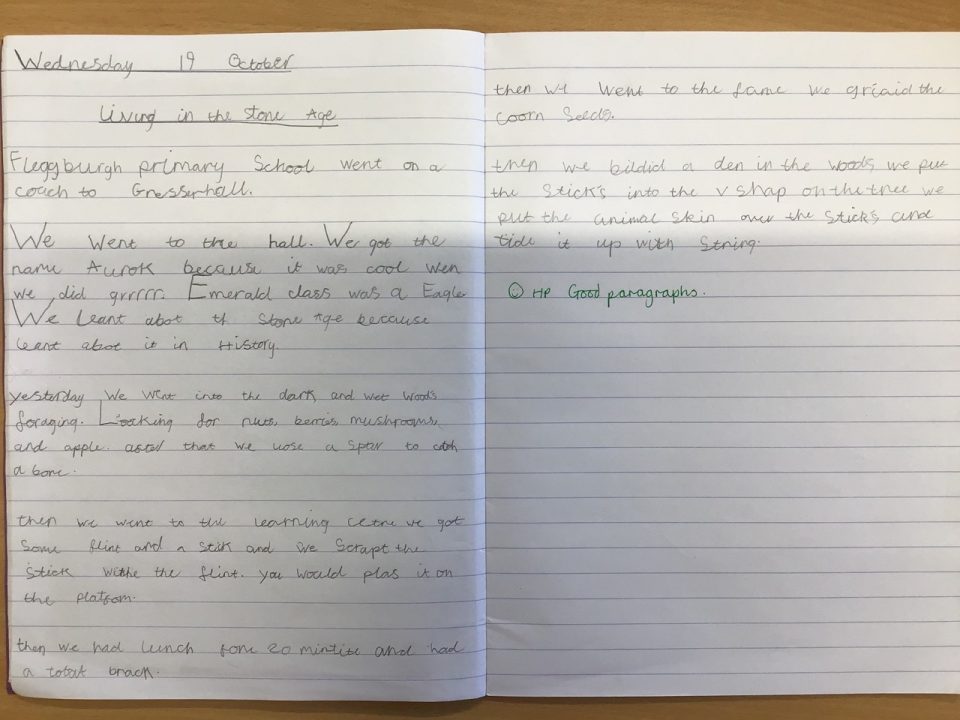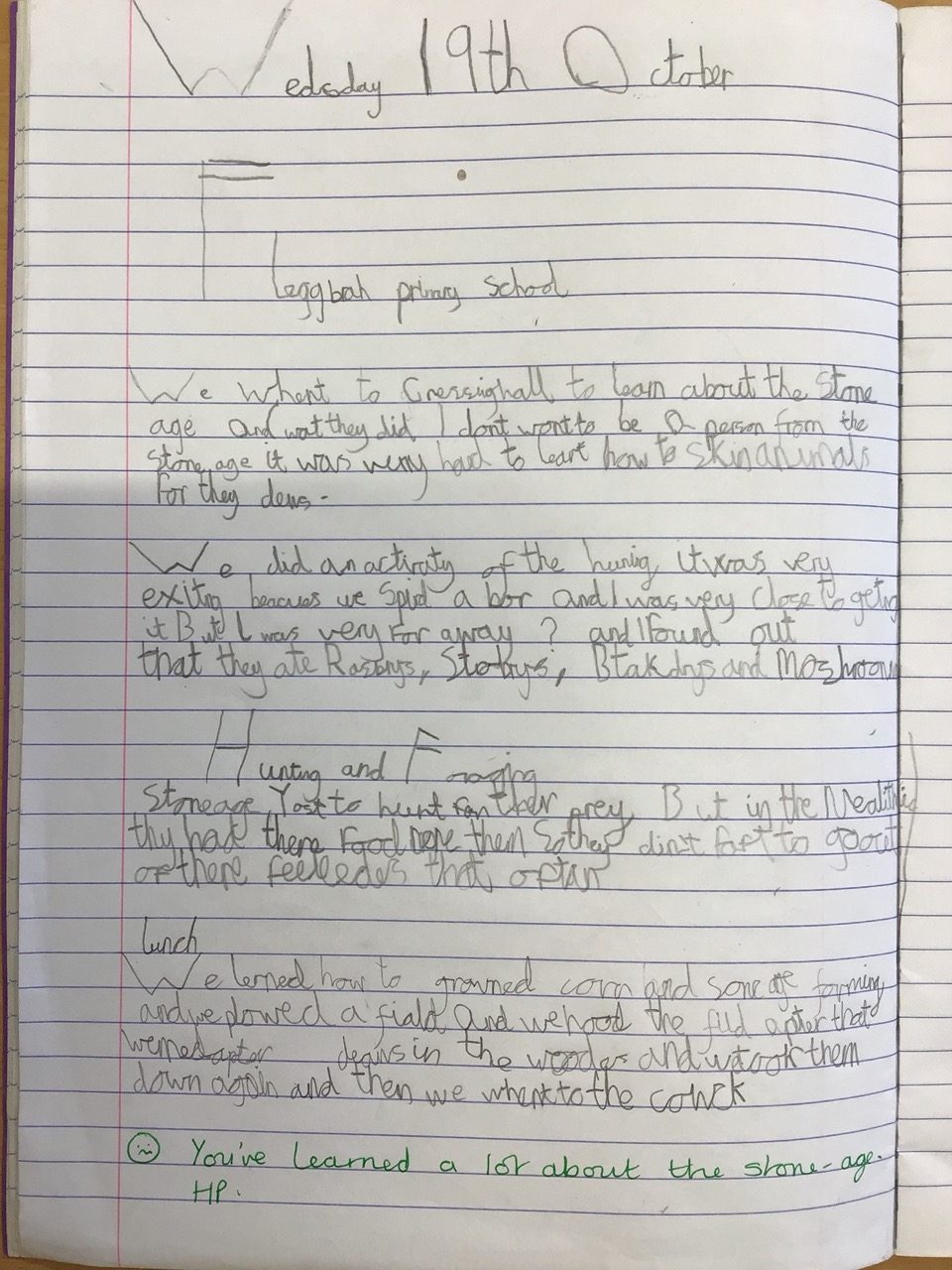The children looked at key events in British history and considered when they may have happened. They then worked with a partner to arrange the events on a timeline, looking carefully at the dates.
History
The Norfolk Broads
Diamond Class are learning about the Norfolk Broads. Today they researched birds of the area. Cora said she has seen a bittern and a kingfisher before. We listened to the boom that a bittern makes on the ‘Norfolk Wildlife Trust‘ website.
Forest Schools
This week in Forest Schools we continued exploring Ancient Egypt though different activities. We learned how to use a ‘clove hitch’, which is an ancient type of knot, to make our own miniature tripod pyramids. We were given sheets of Egyptian Hieroglyphics so we could work out how to write our own names. We also had one that Stacey had created for us to decipher. We learned how to ‘whittle’ wood into points using a potato peeler. We all listened very carefully to the rules and some of us used them to write our Egyptian name in clay.
Emerald Class History
In History Emerald Class have been learning about the Wright brothers and the invention of the aeroplane. We have been comparing the old model plane to a modern plane.
Emerald Class History
We are learning about Travel and Transport. We made our own Viking long boat.
William said, “They were made of wood.”
Jacob said, “They were very long!”
Elsie knew that they put their shields along the side of the ship.
Clay Pots
To make their clay pots, Stone age potters would first have had to gather their materials. They would have got a lump of raw solid clay which they would bash in to small flakes. Then, they would add and mix in: quartz, crushed fruit and shells, old, burned clay pots and water. When this was smooth, they would get roughly a quarter of the clay, pinch it and flatten it into a base with short edges. Next, they would roll out their clay, bit by bit, and coil it up on top of the layer underneath. After that, they would use flint scrapers to smooth the sides. Next they would use their fingers, bird bones, claws and antlers to decorate the pot. Finally, they would set them on fire to turn them in to earthenware.
To make a pinch pot we simply flattened the clay and pinched up the edges. For the coil pots, we made our base first. Then we scored diagonal slashes across the coils of clay and the base. We put a little amount of water on the layers and put the coils around the rim, lining up the scores to help them join the layers together. We continued this process until we had a pot. Then we used our tools to smooth the edges and add our decorations, just like the Stone Age people would have done.
Jamie and Maya
Stone Age Hand Prints
As part of our study of Stone Age art we looked at hand prints that have been discovered in caves and created our own. It was fun (and messy) trying to discover the best painting technique to create them.
Forest Schools – History Focus
This week in forest schools we had a fire. We discussed how we keep safe near an open fire and added these to our forest school rules. We looked at how fires are lit today and how Stone Age man would have lit their fires, and what they were used for. We also made charcoal by burning oak sticks in a tin to reduce the amount of oxygen.
At the end of the session, we had the choice of making ‘wood cookie’ name labels to wear in our forest school lessons or playing ‘meet a tree’, where we were led blind folded to a tree, felt all around it then saw if we could recognise it when our blind folds were removed.
